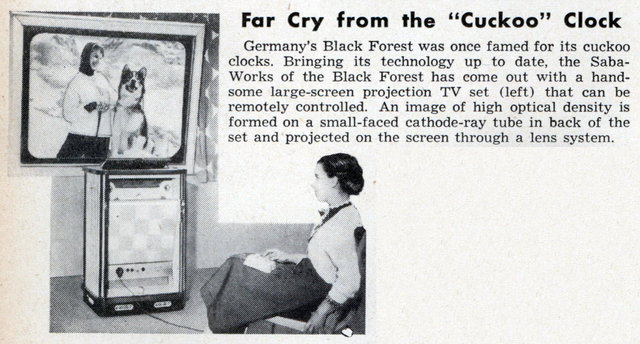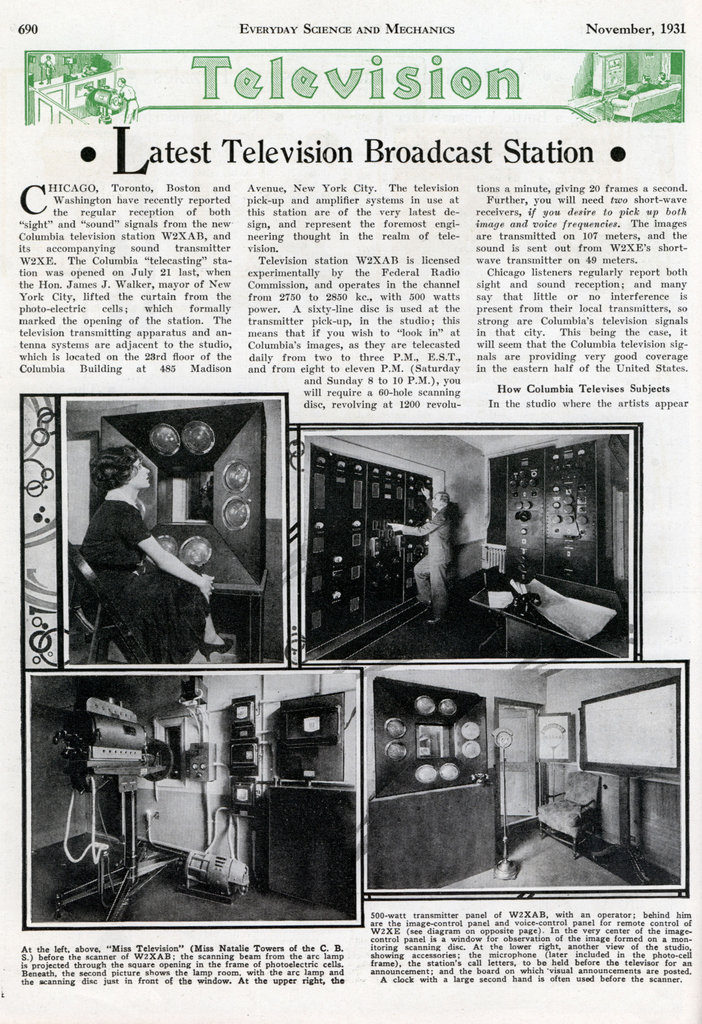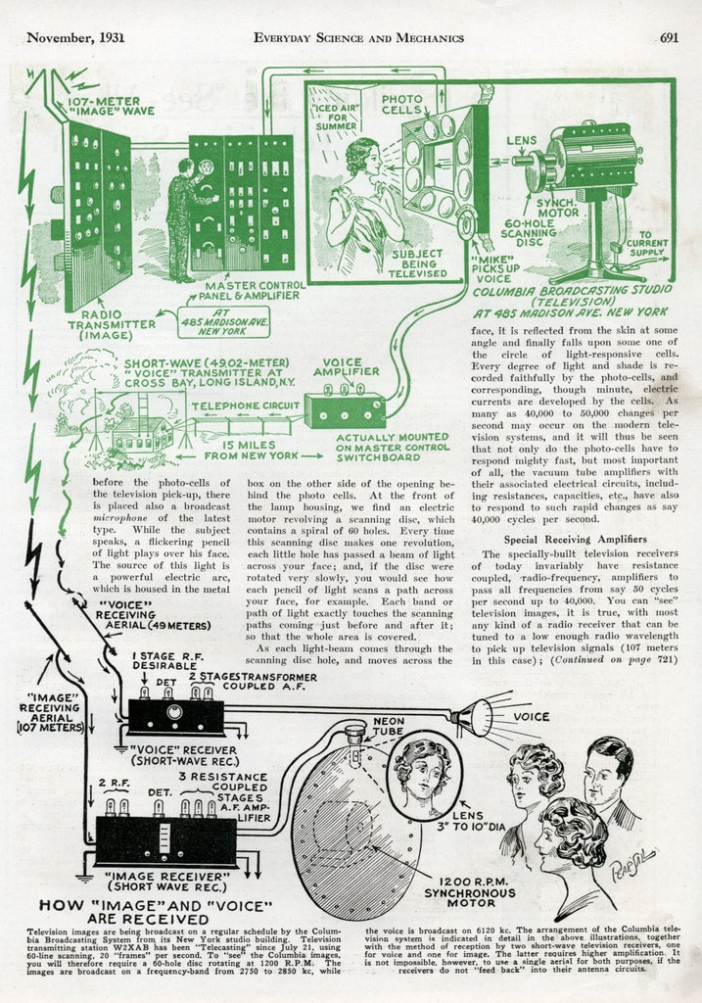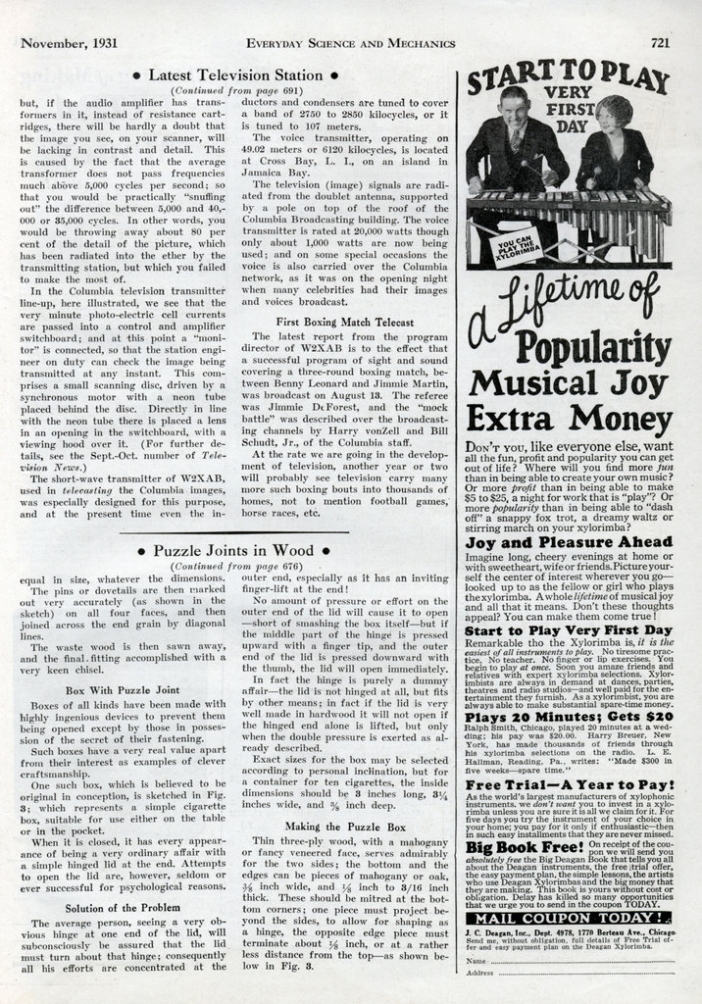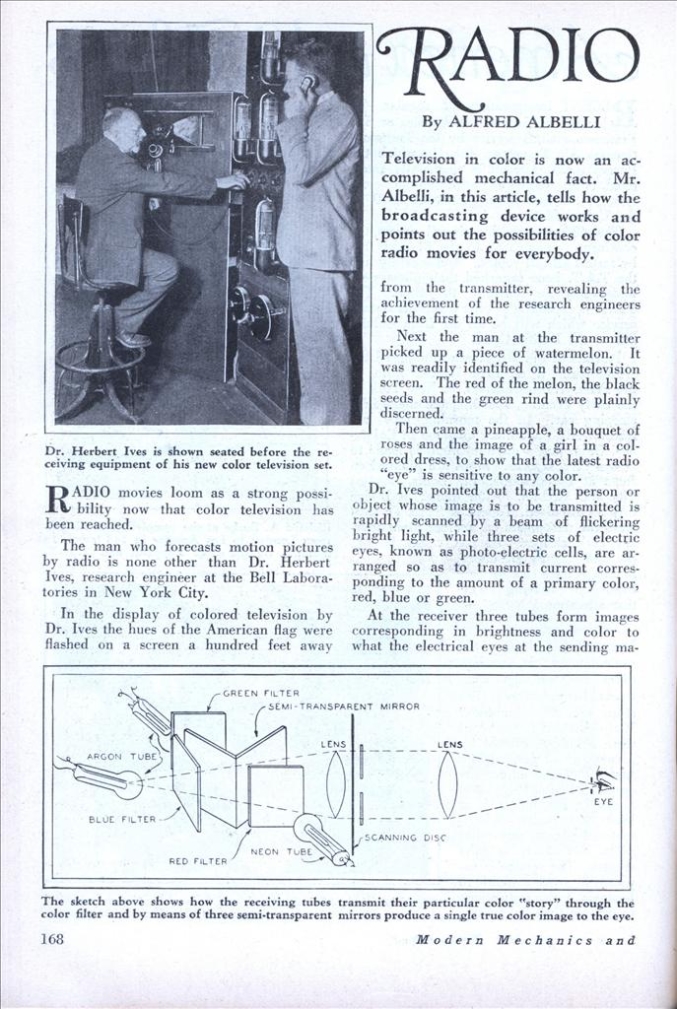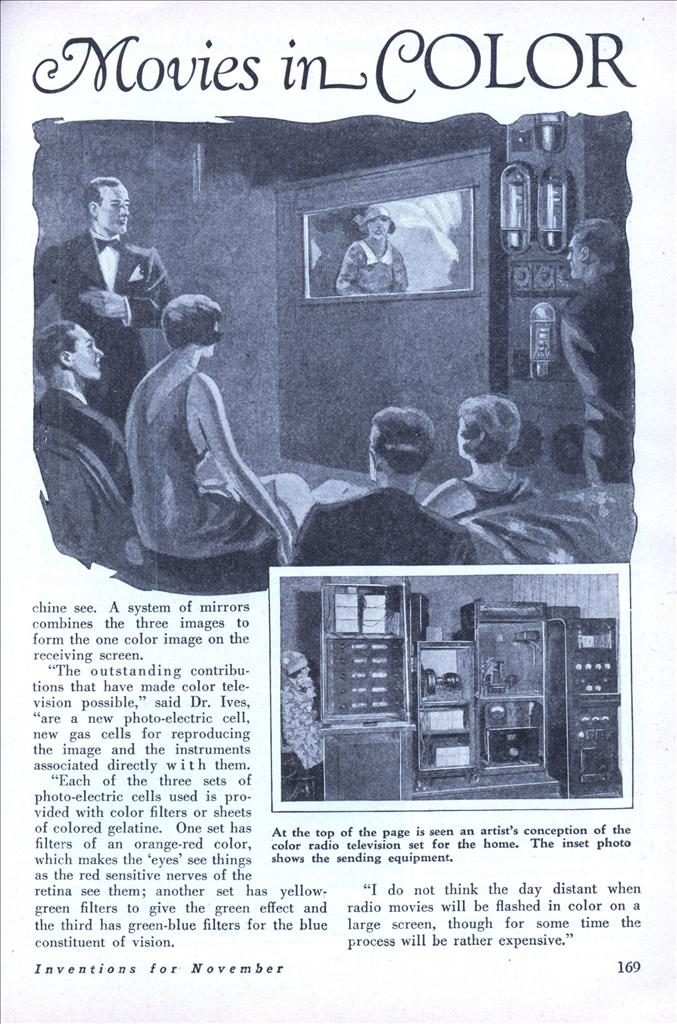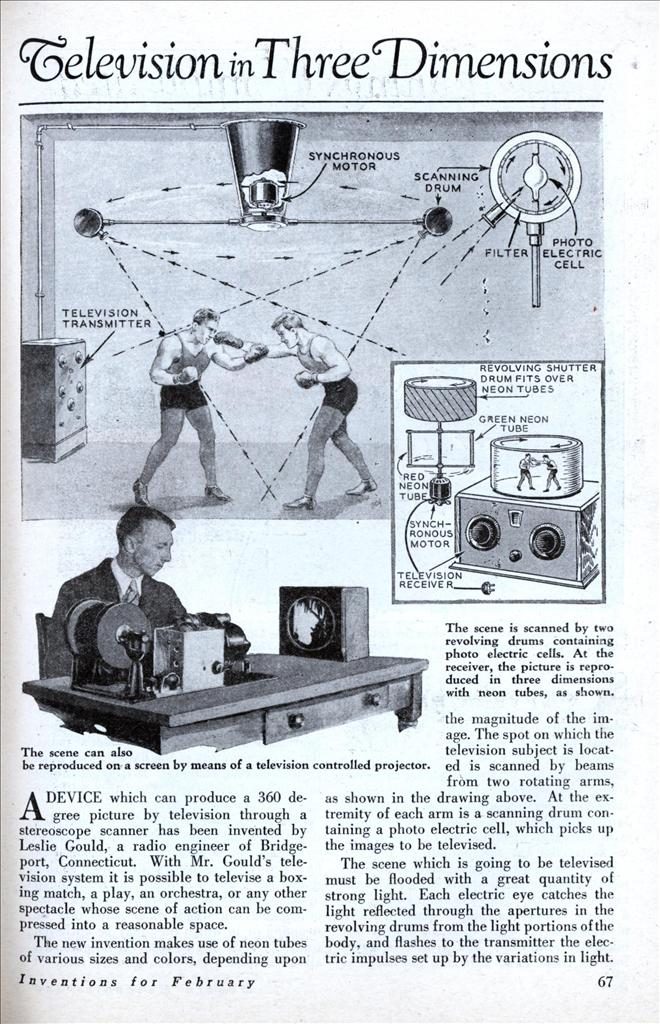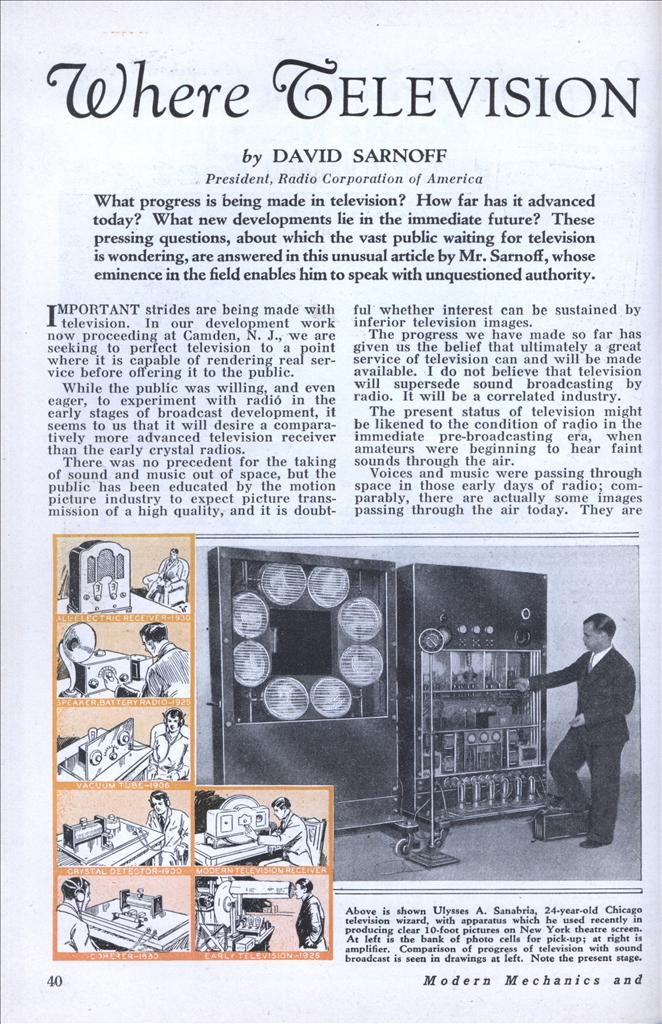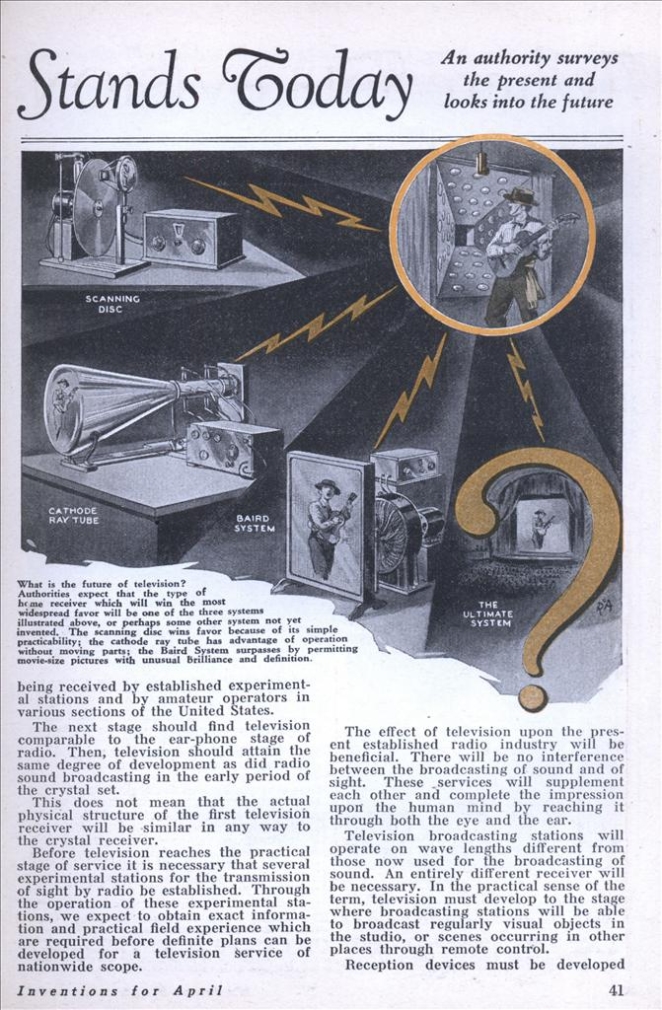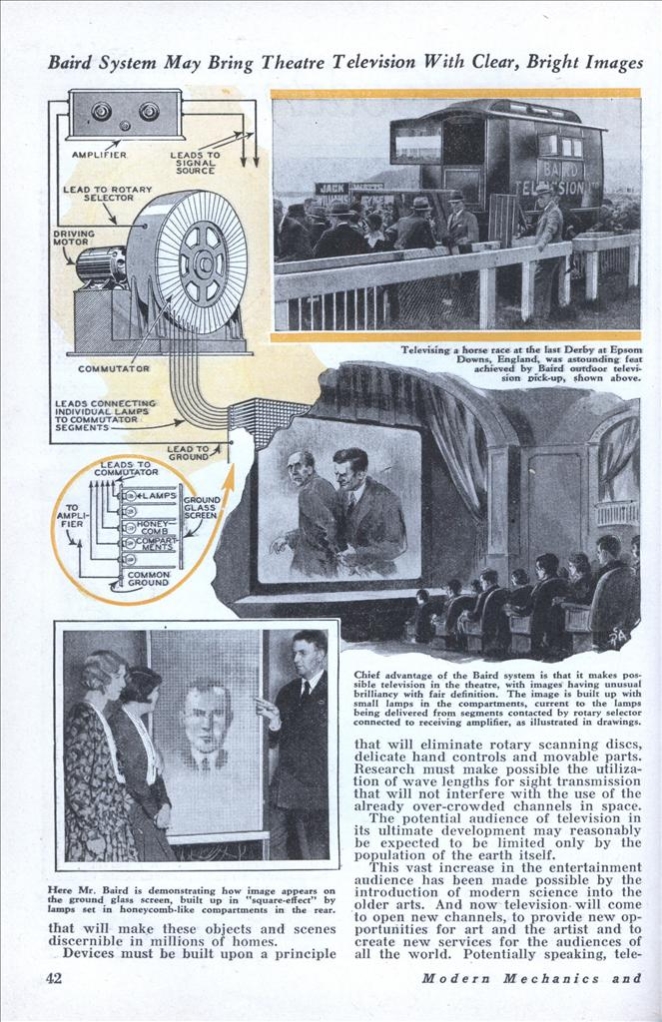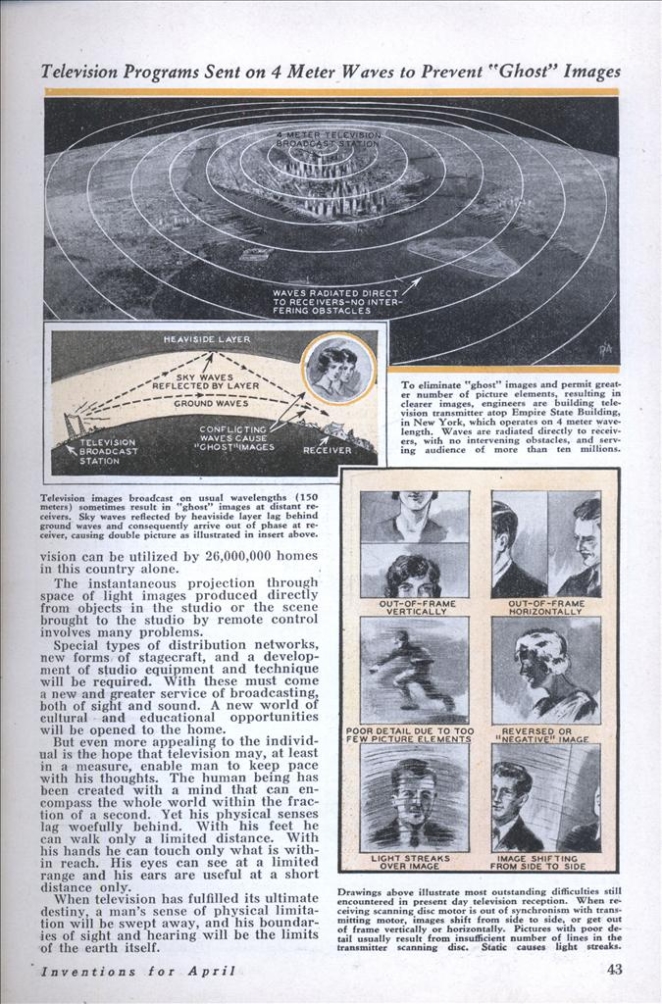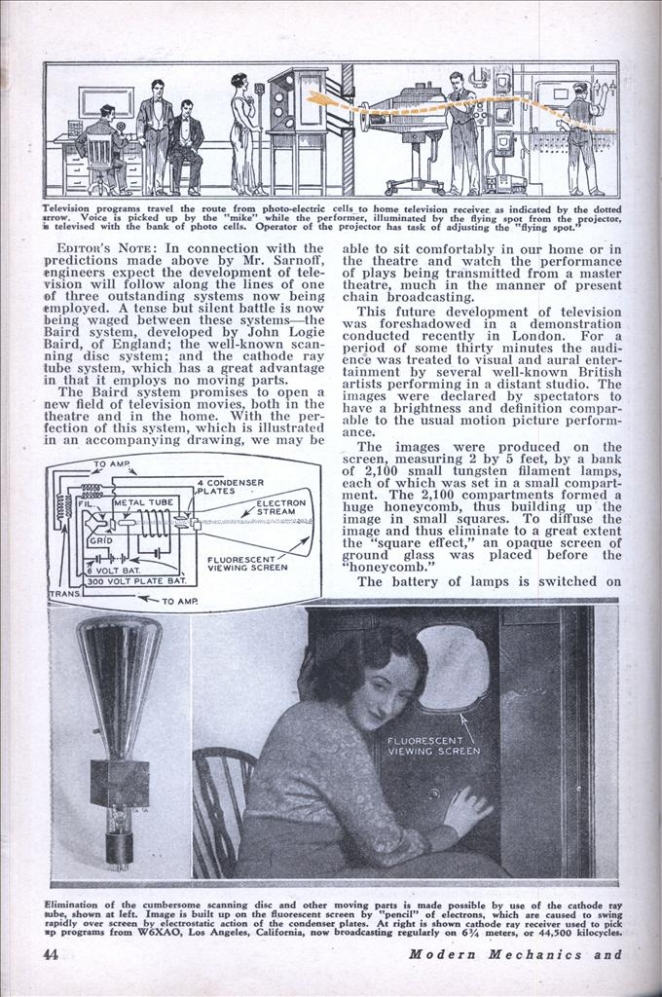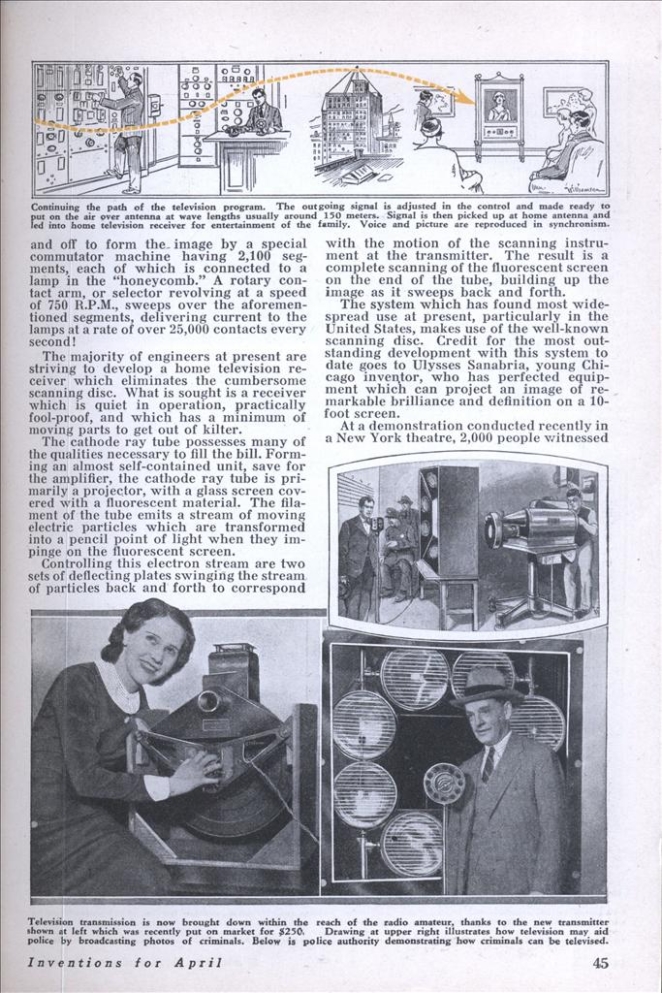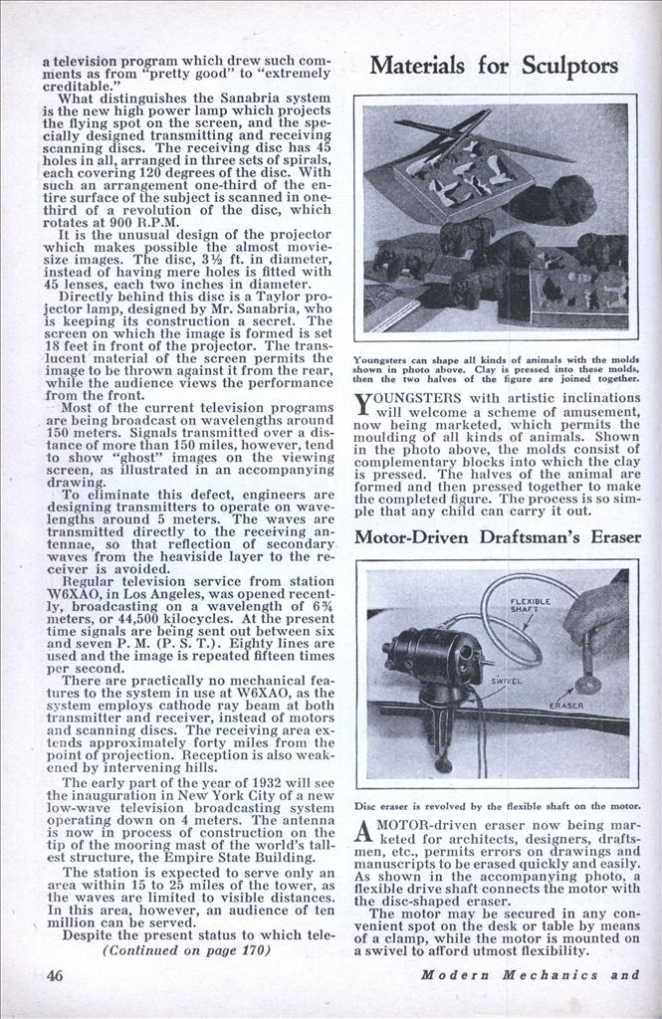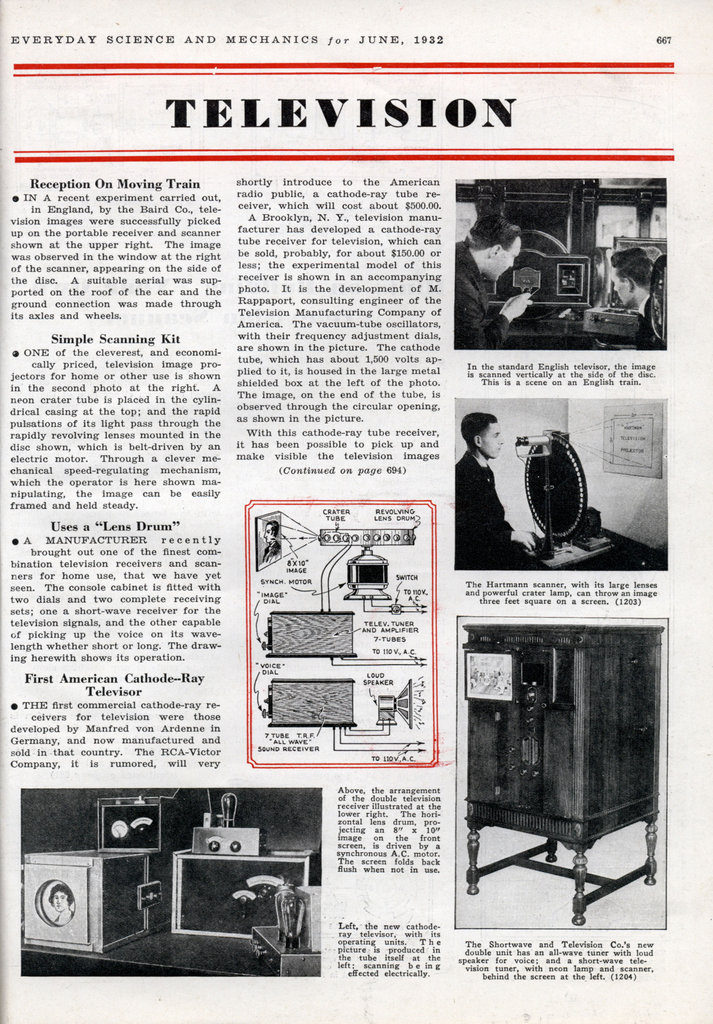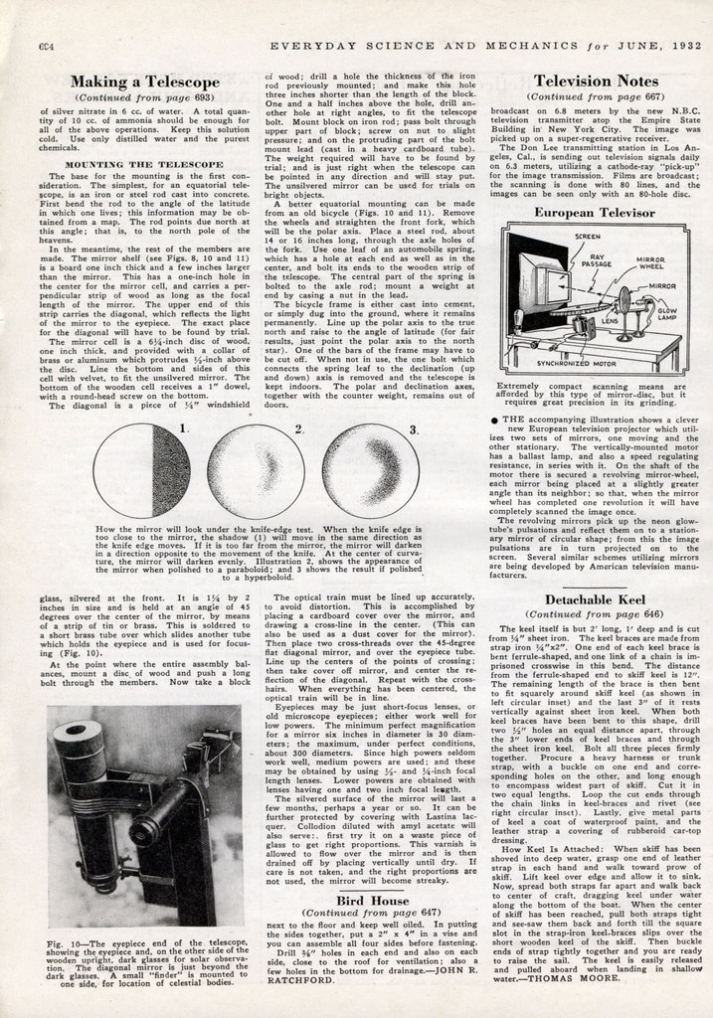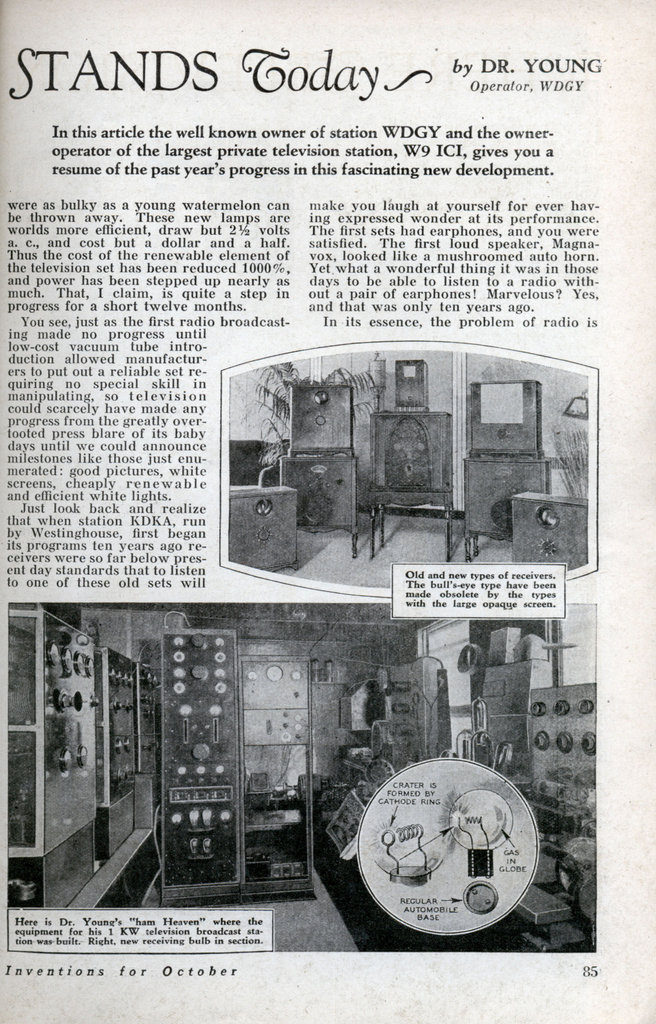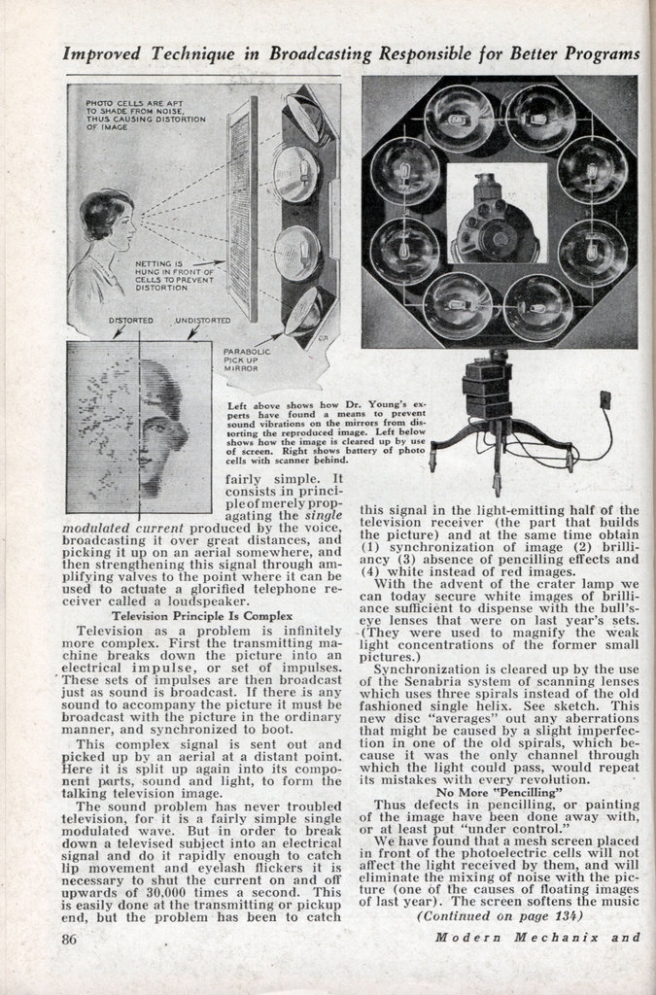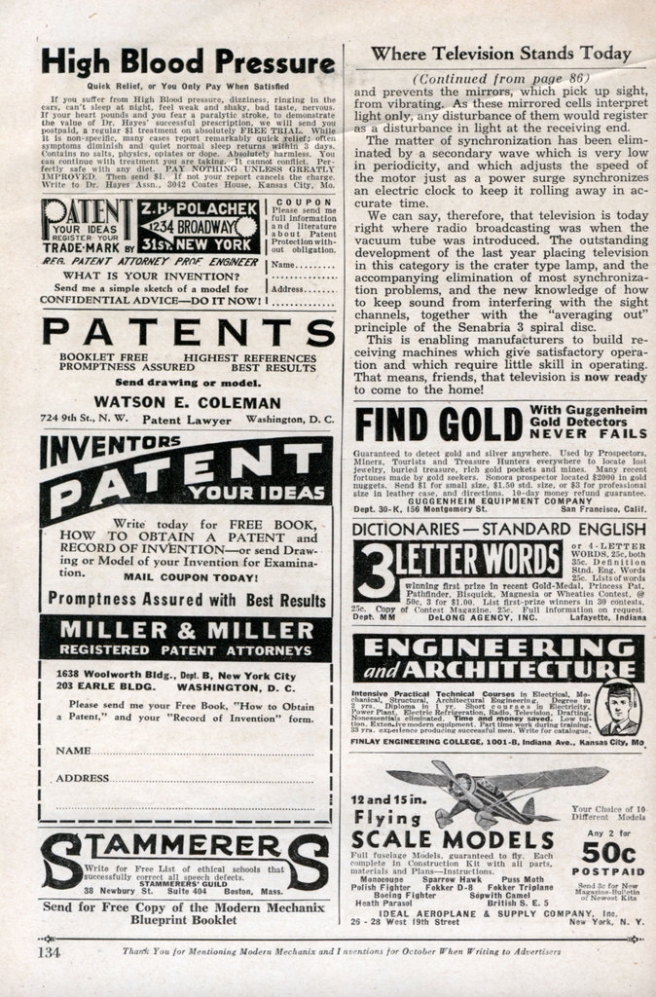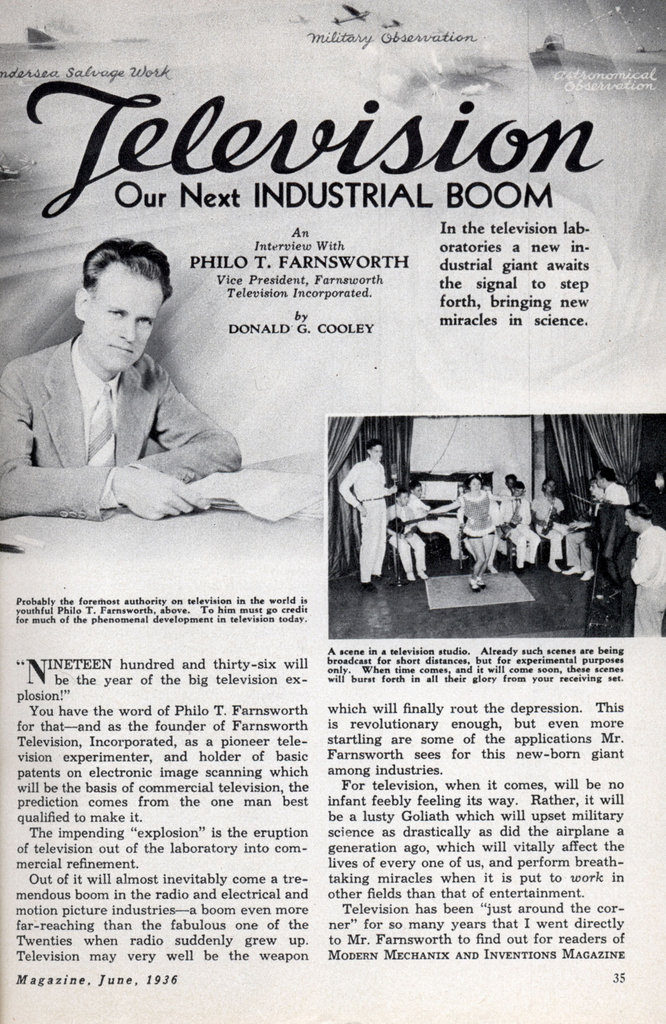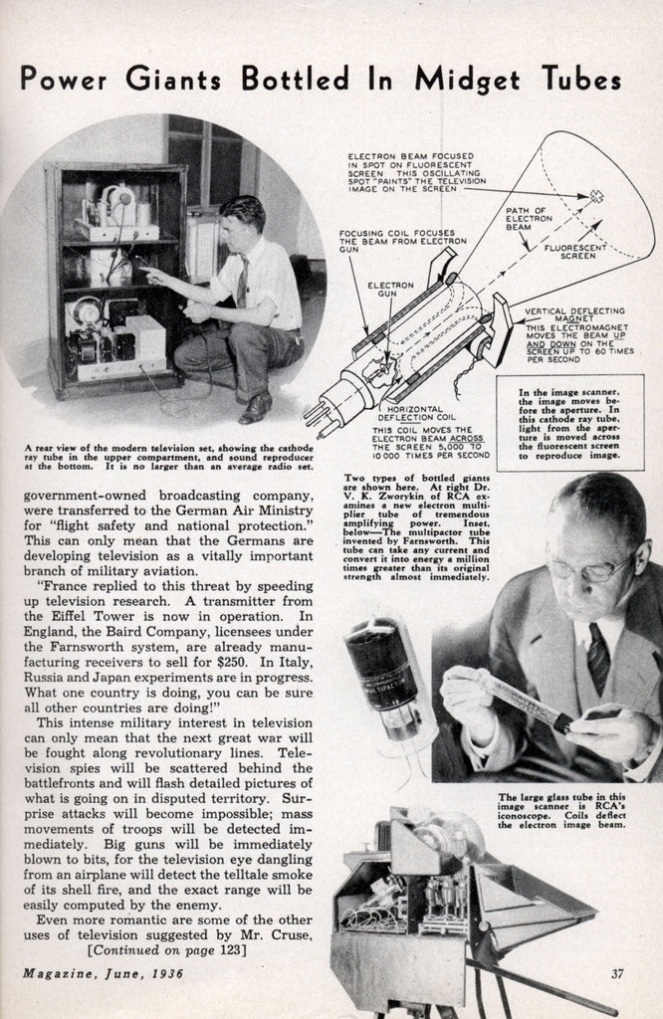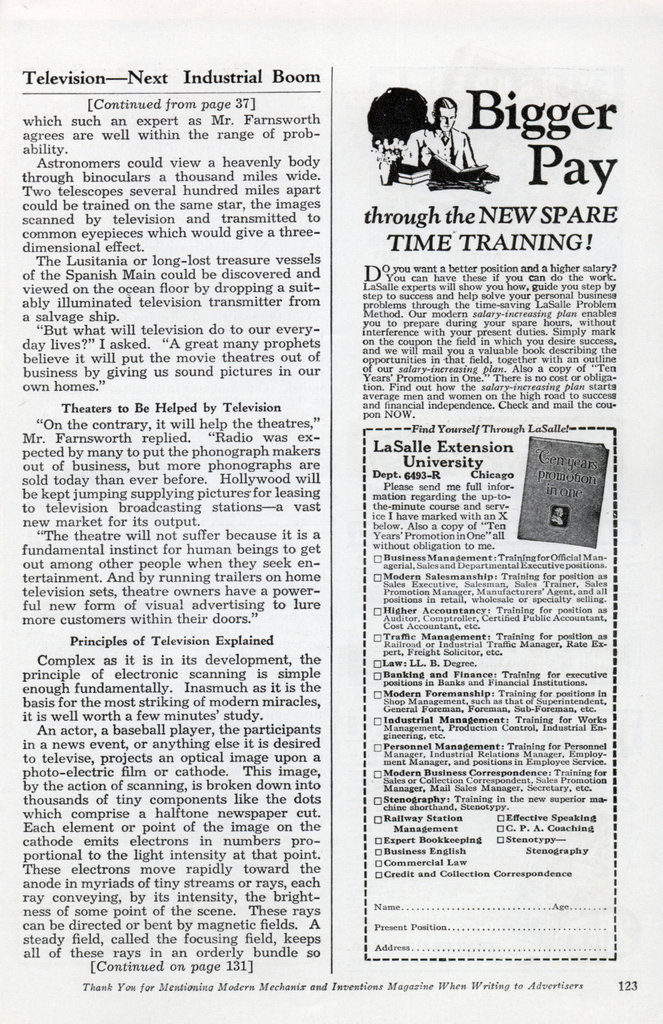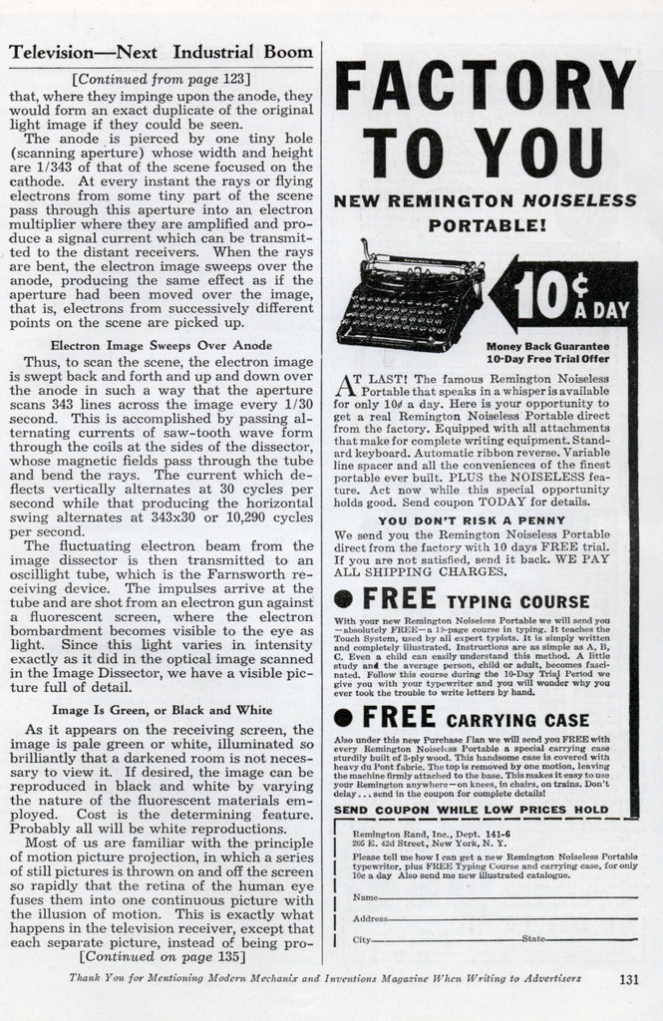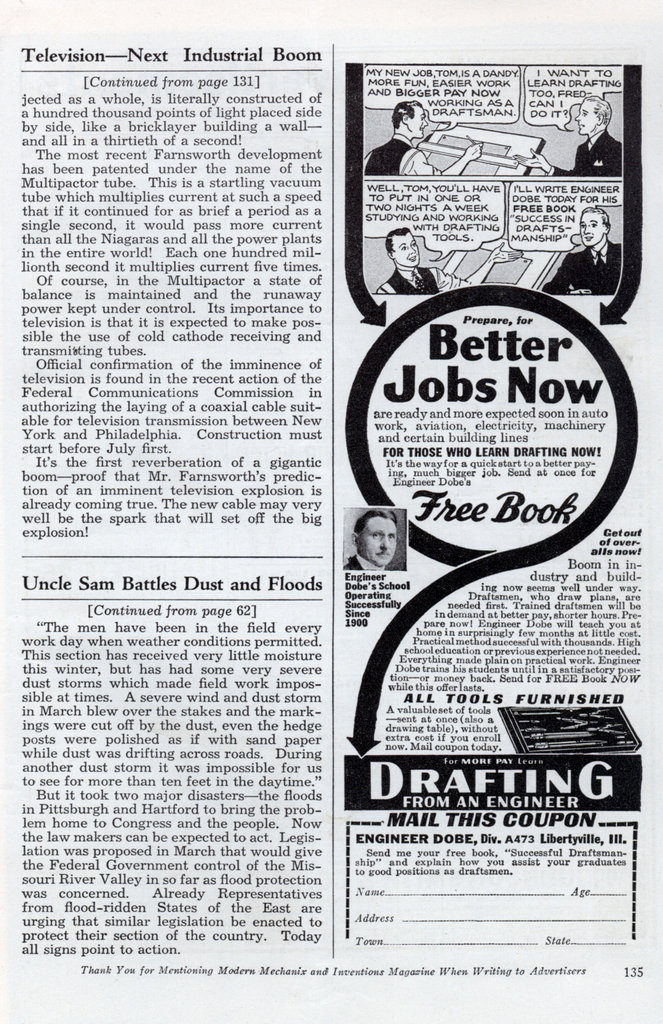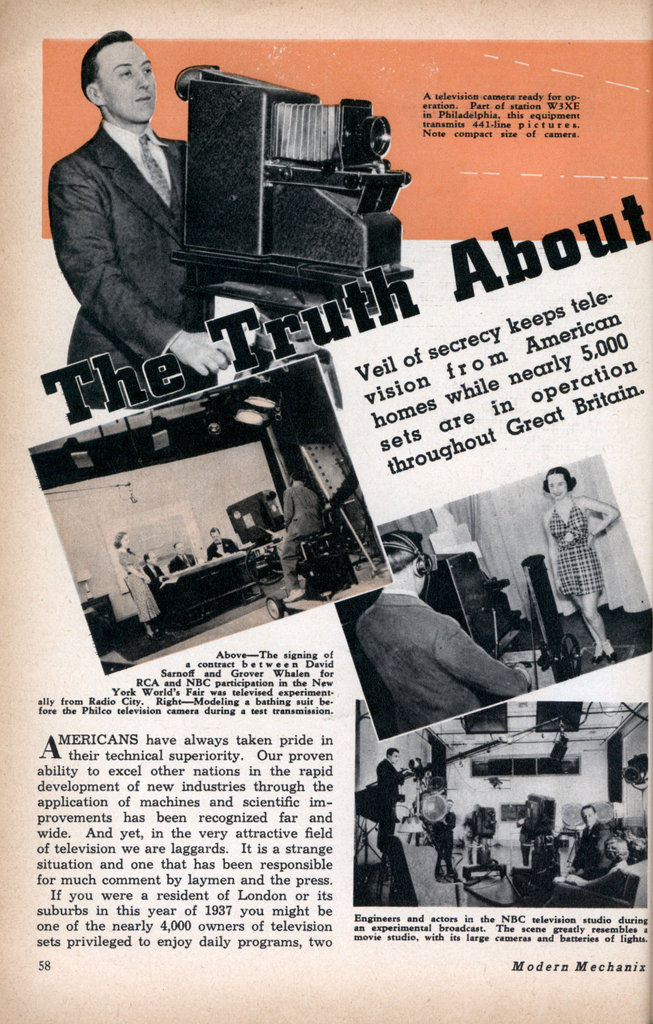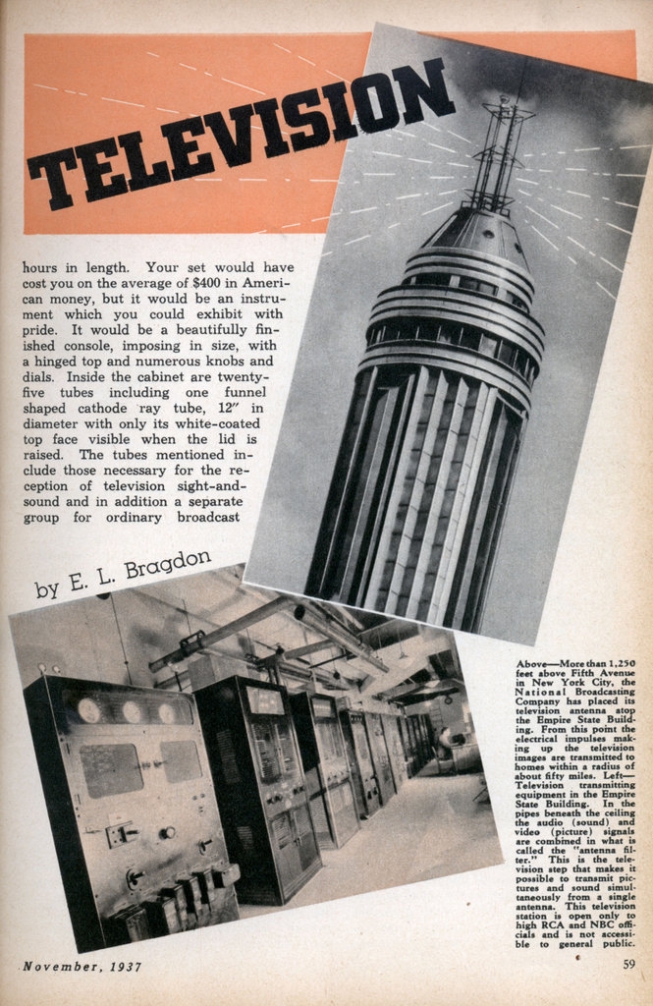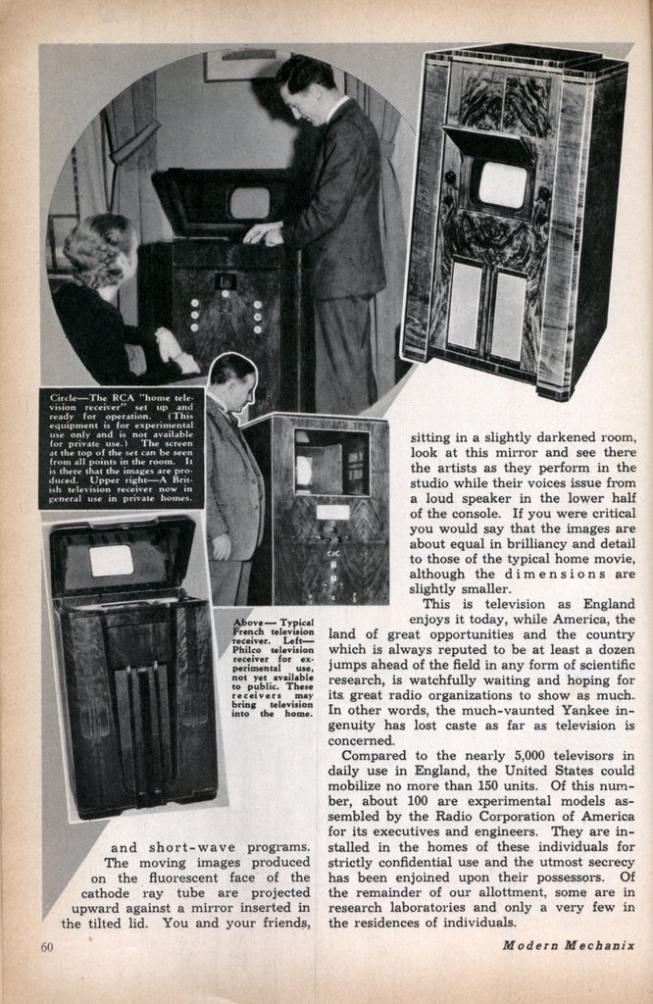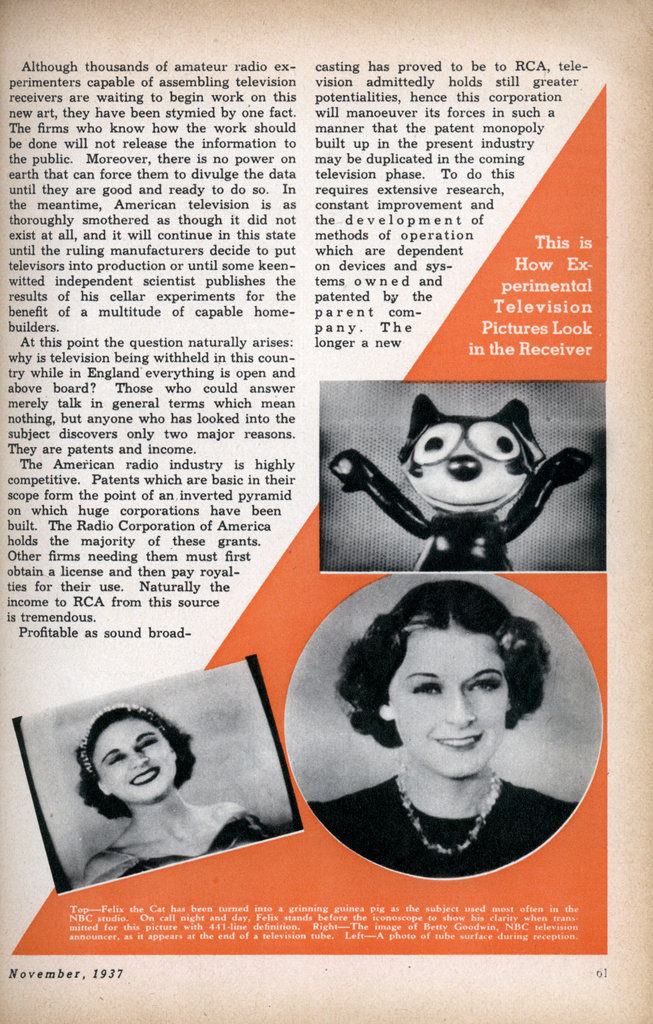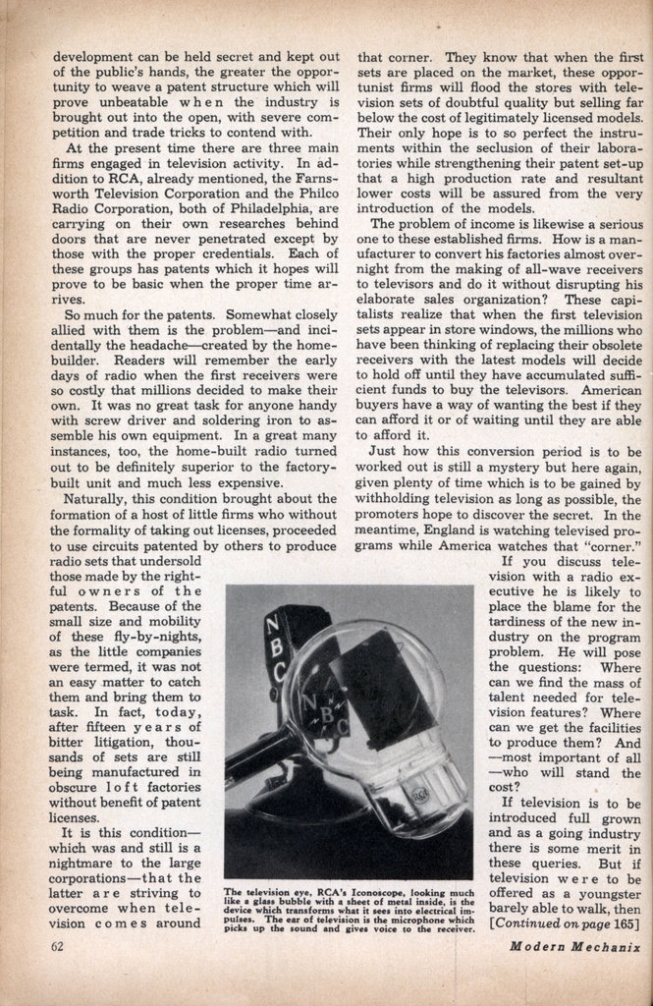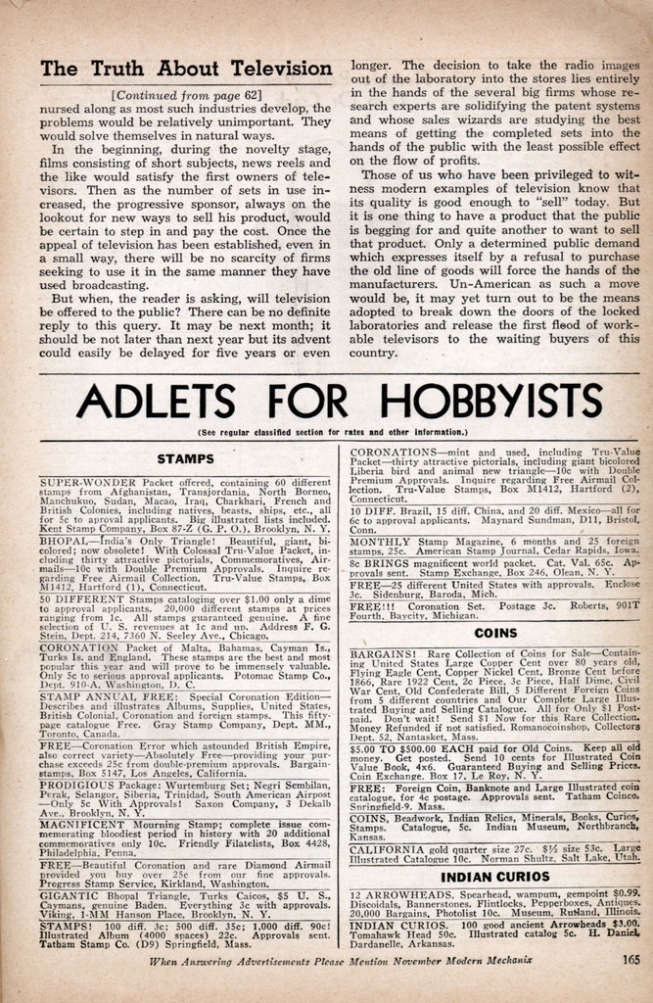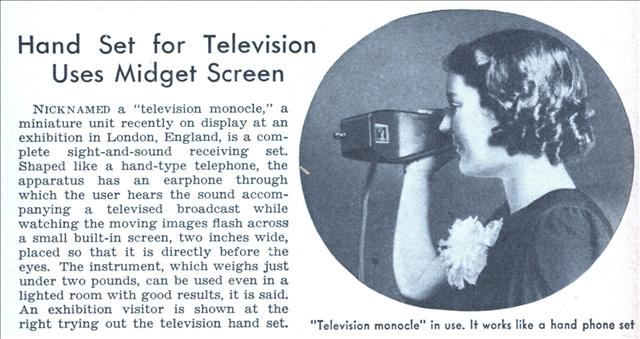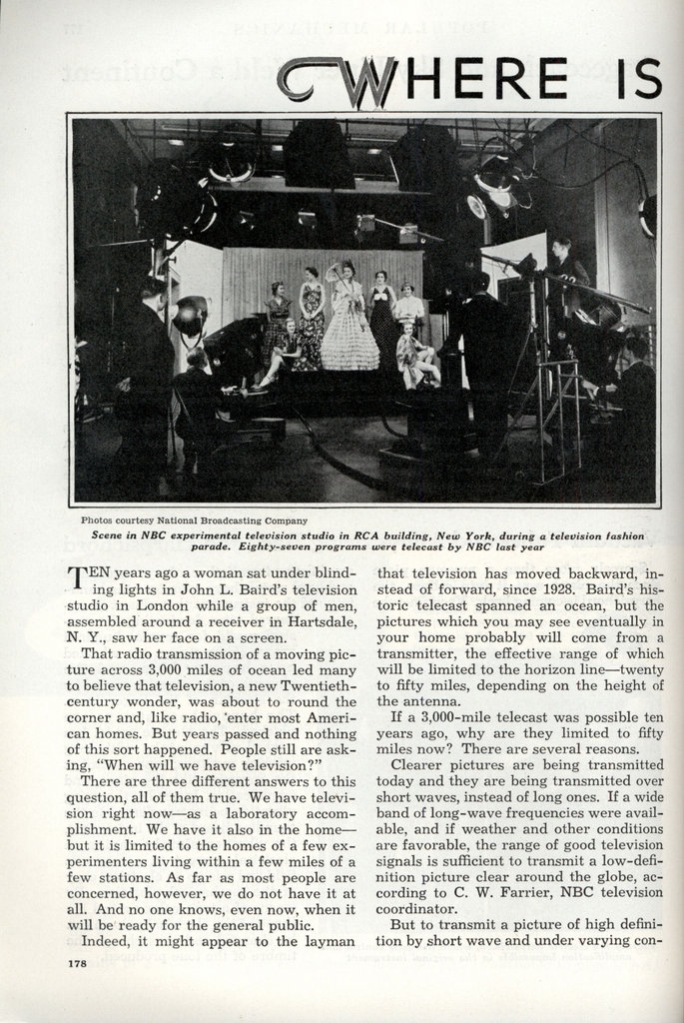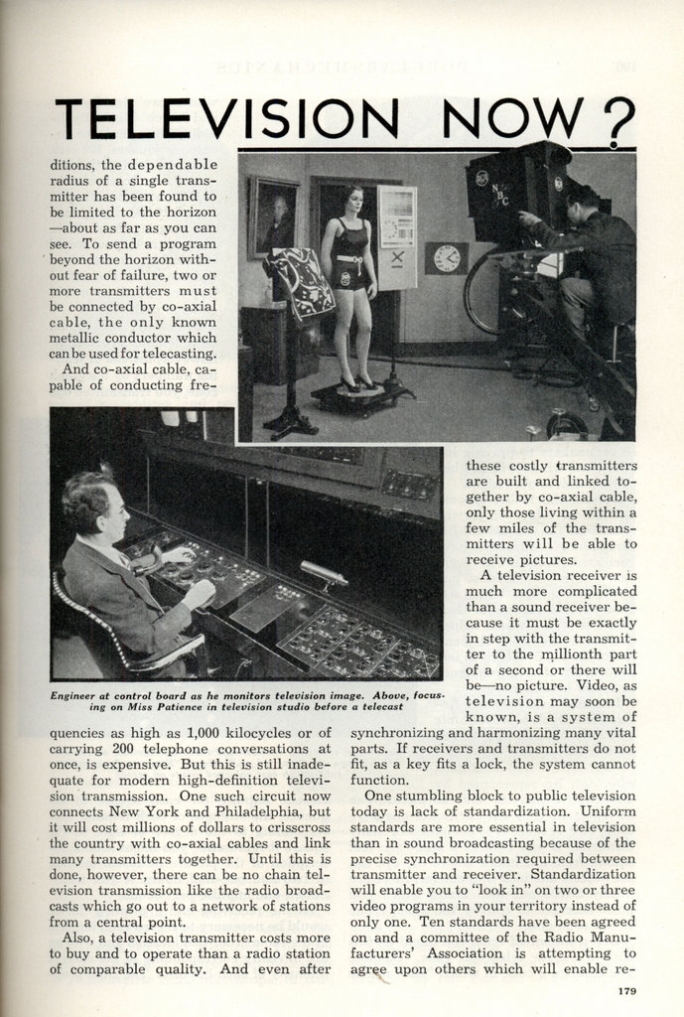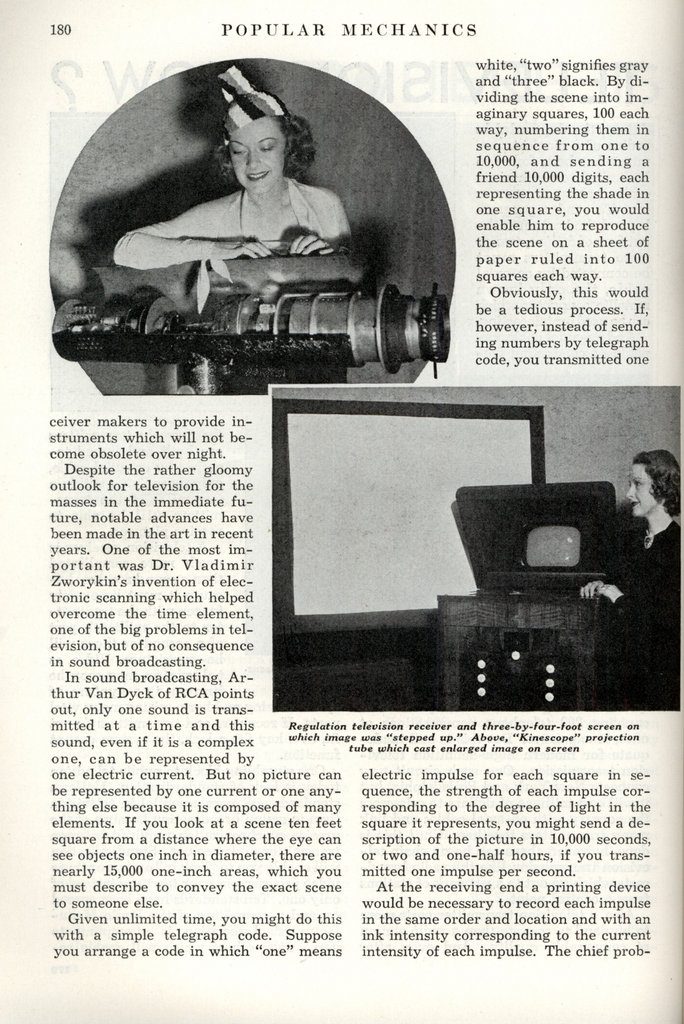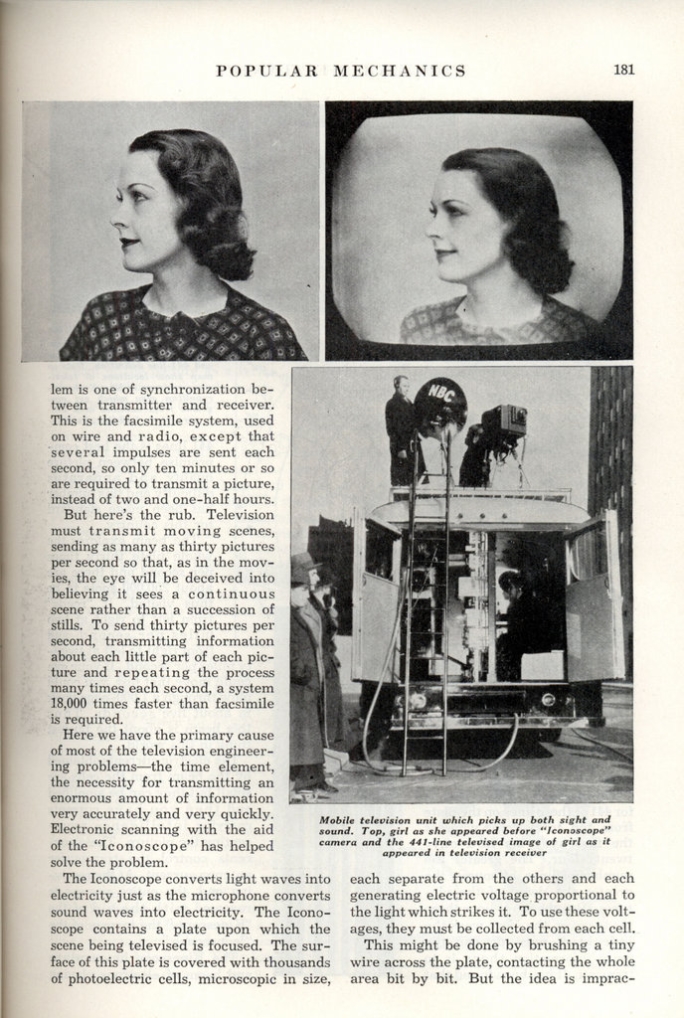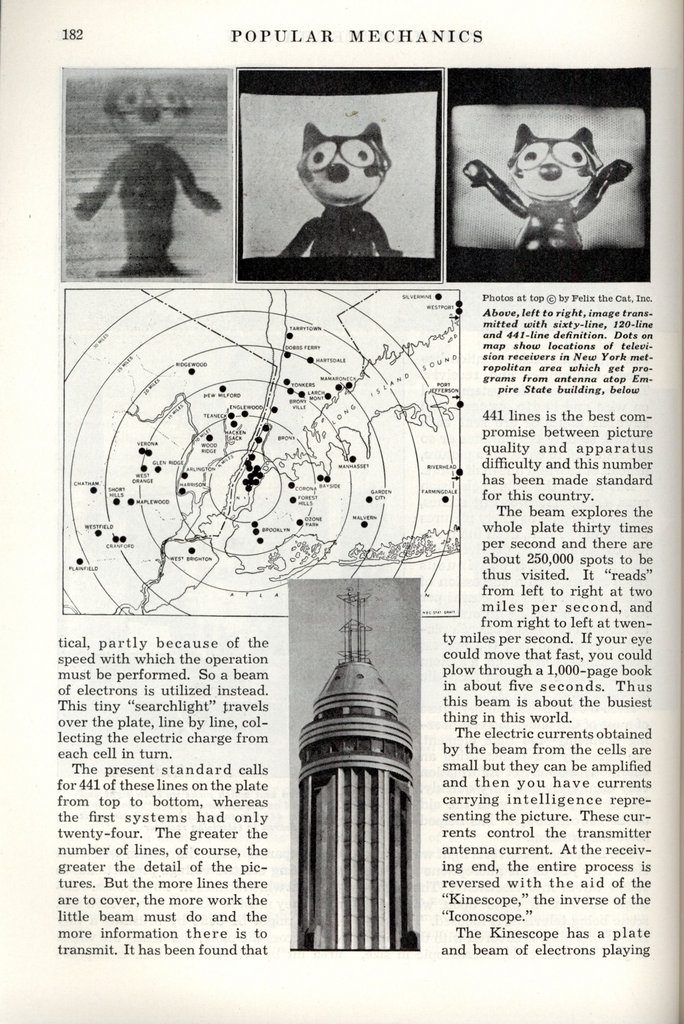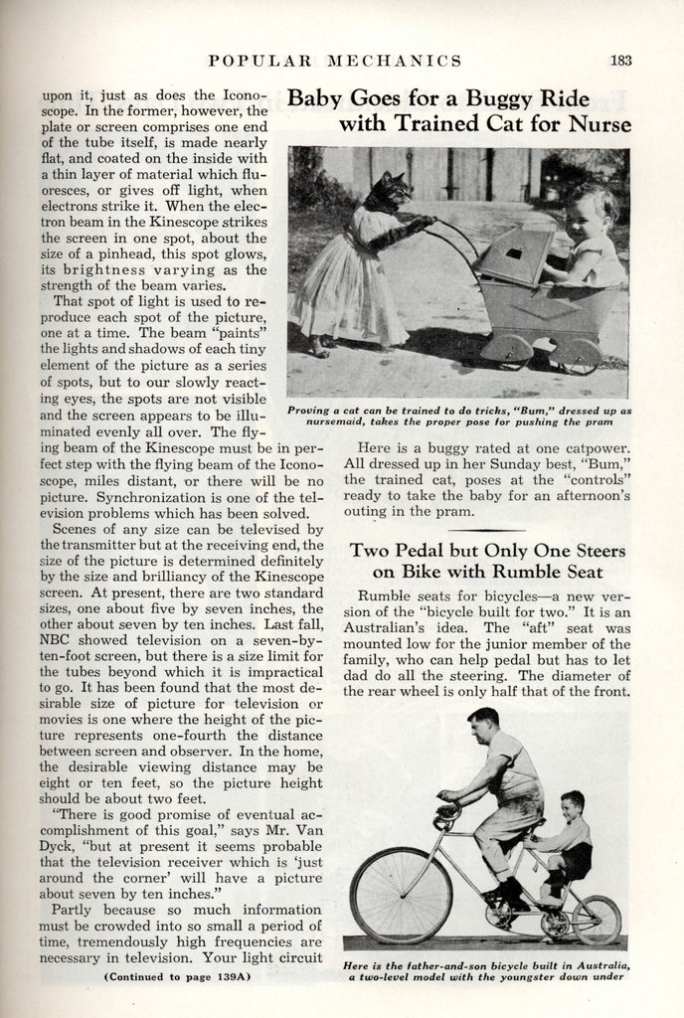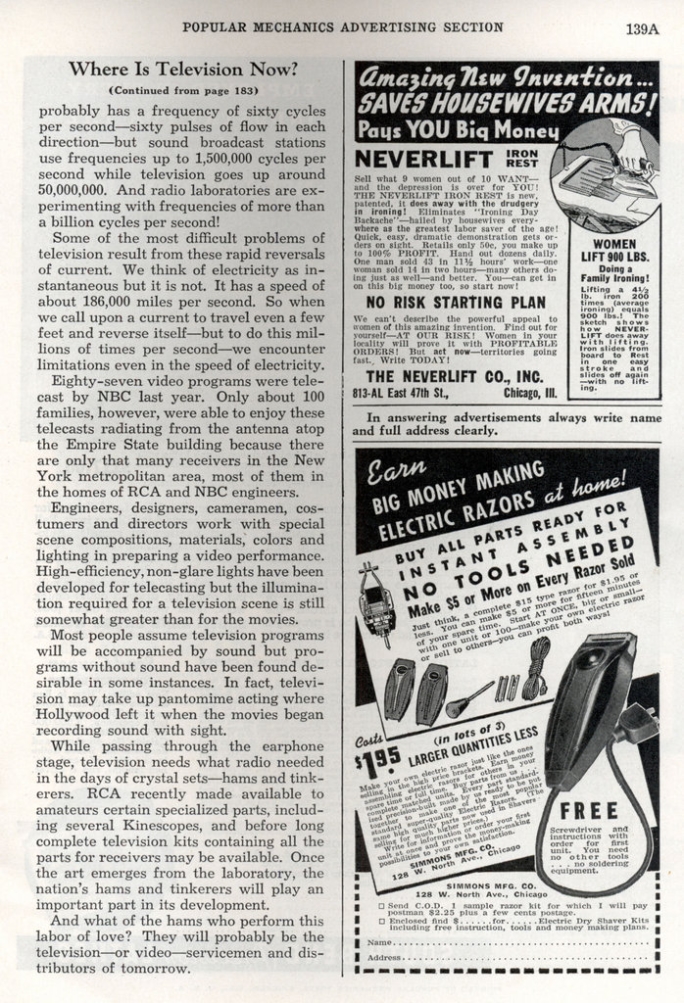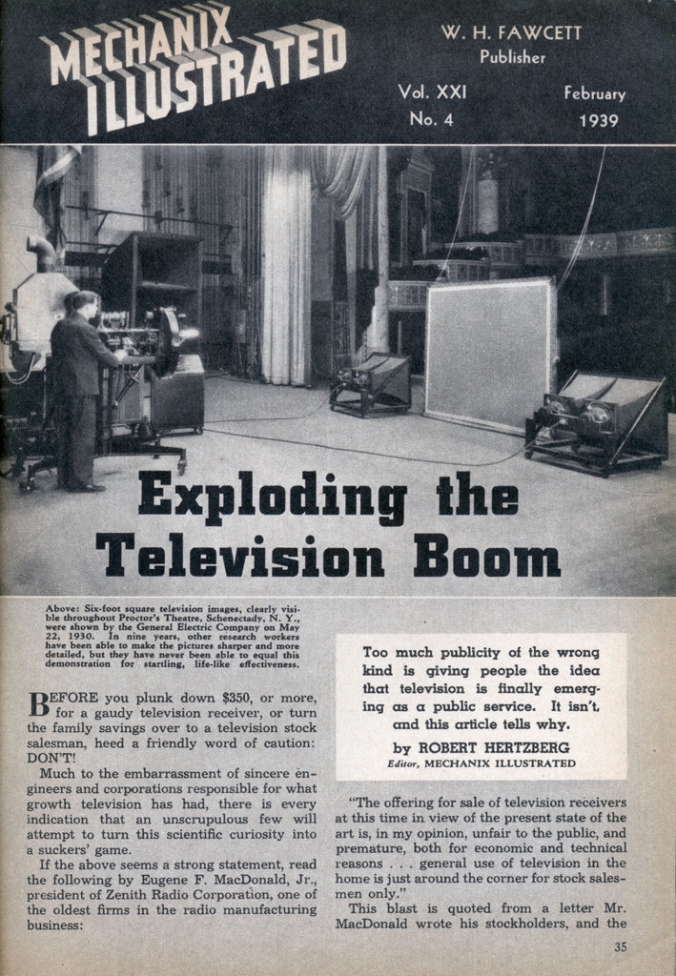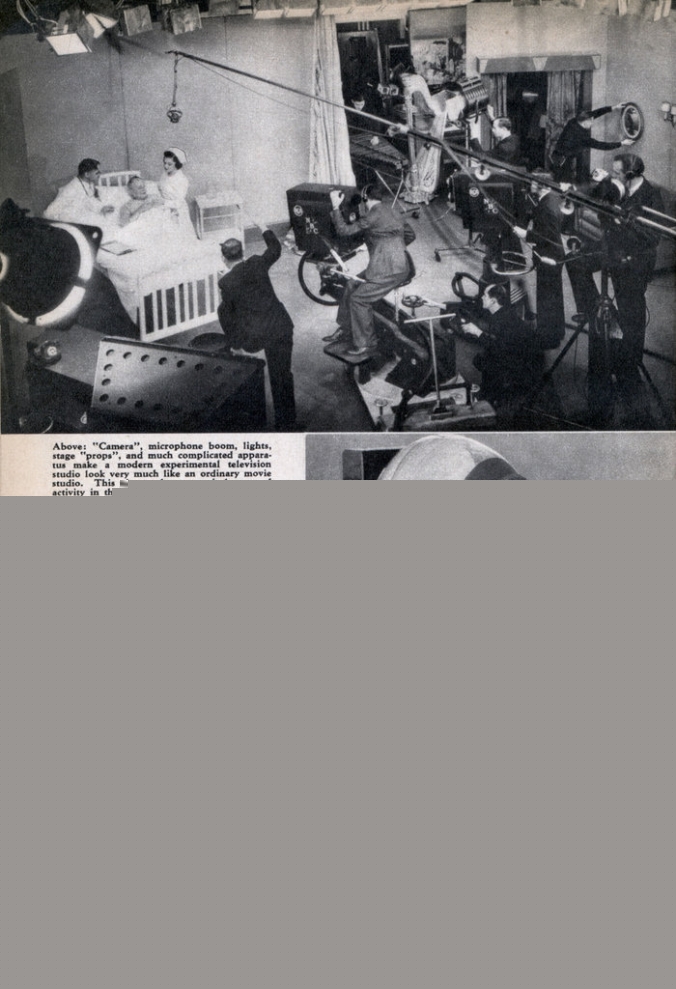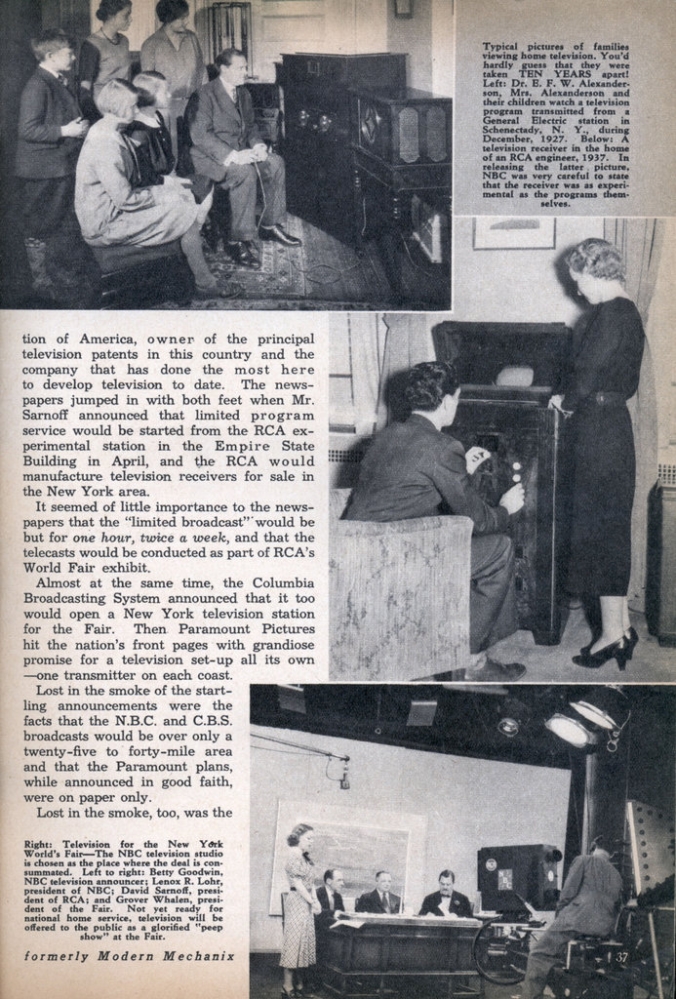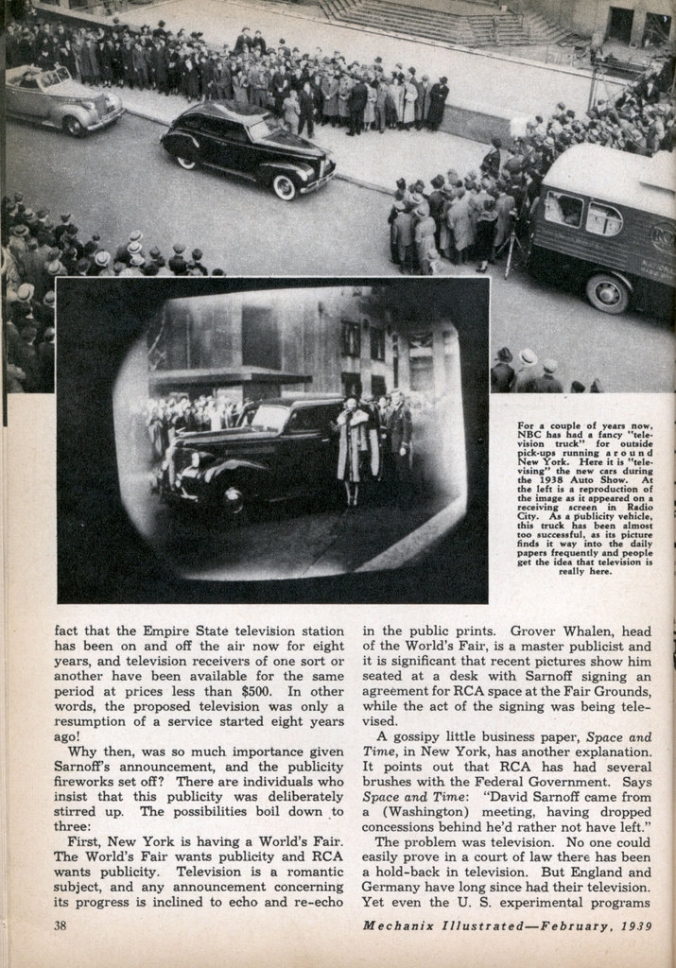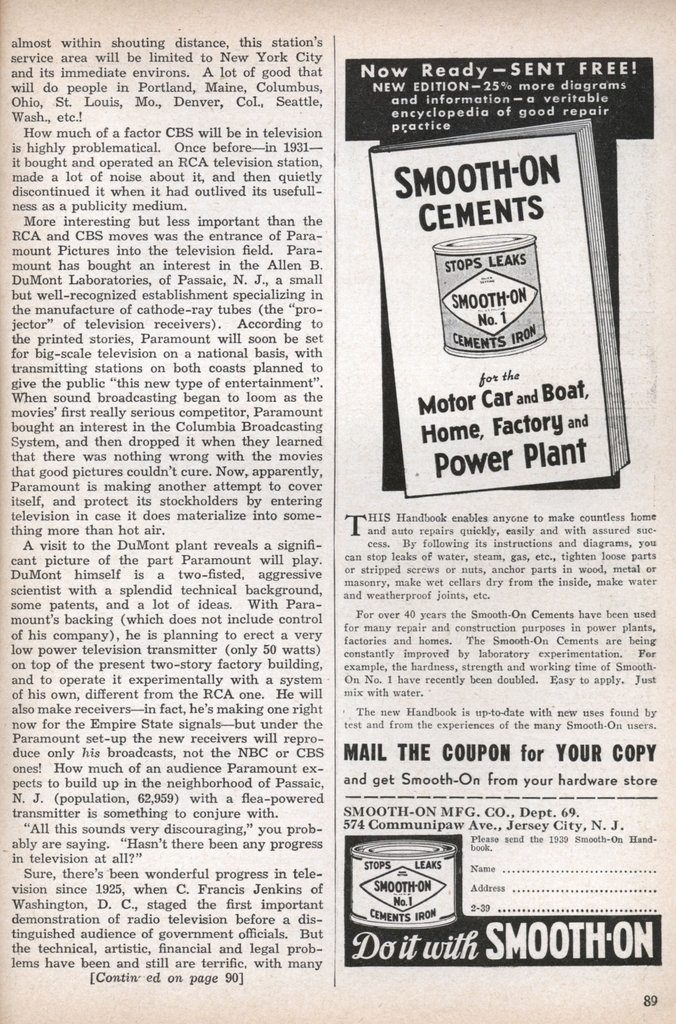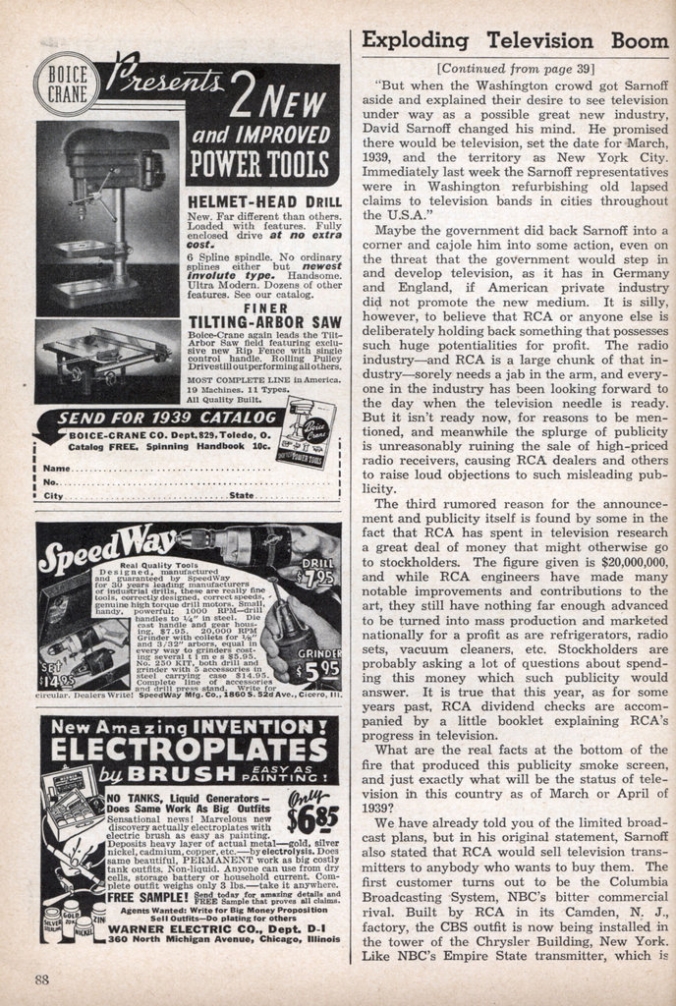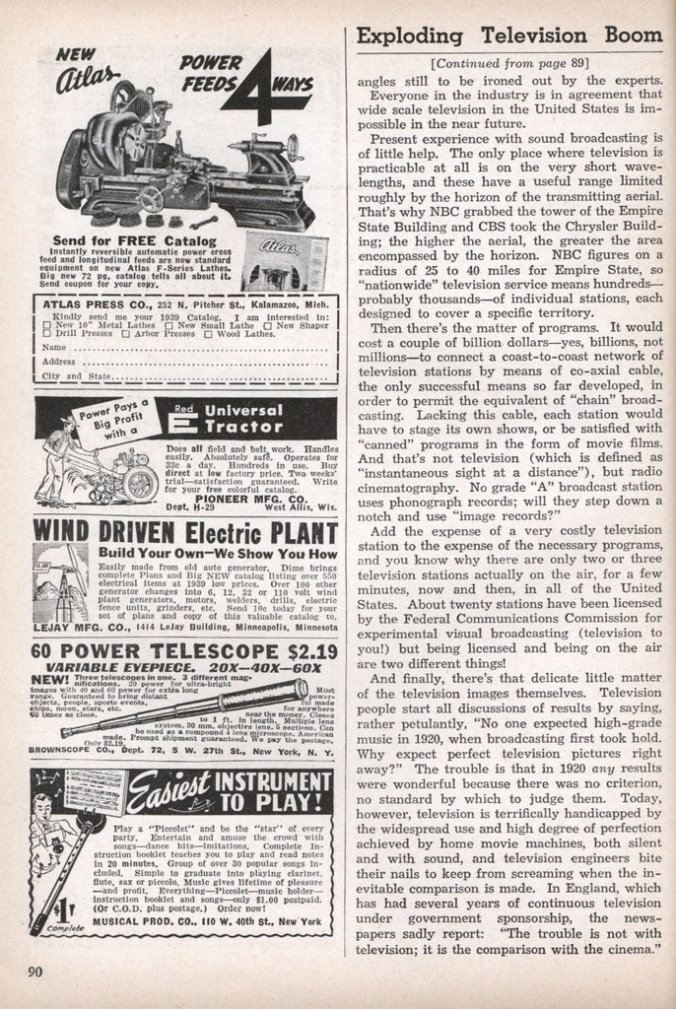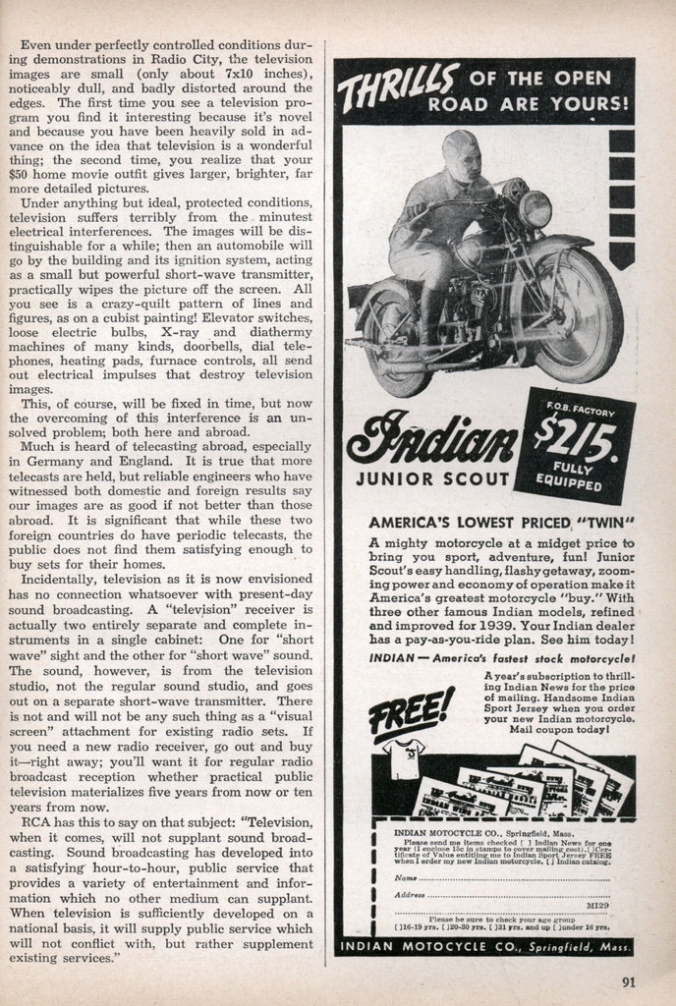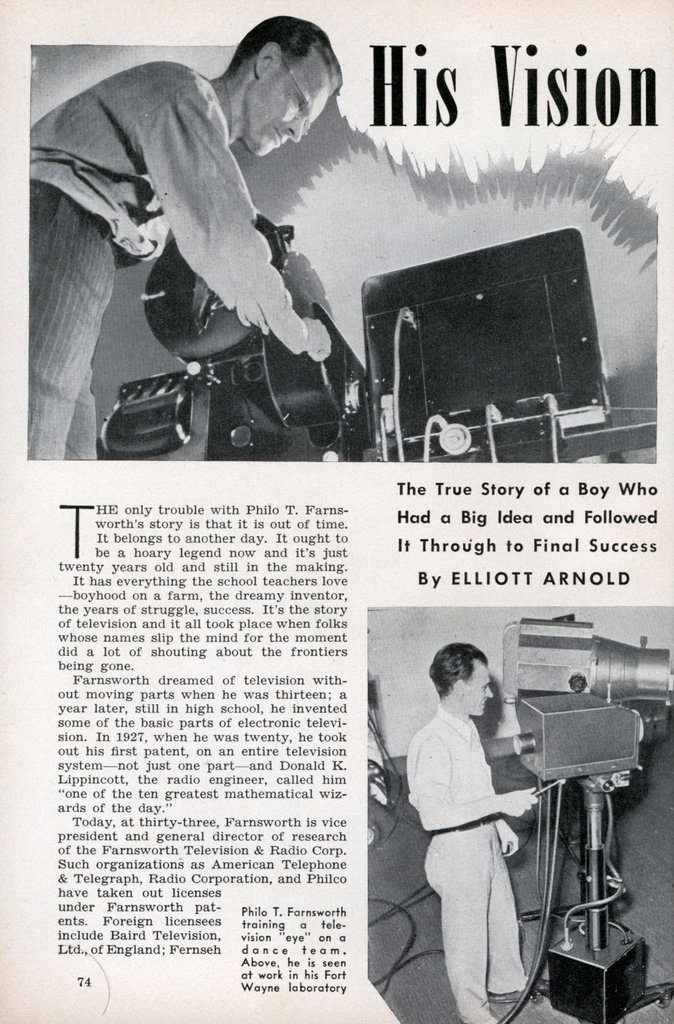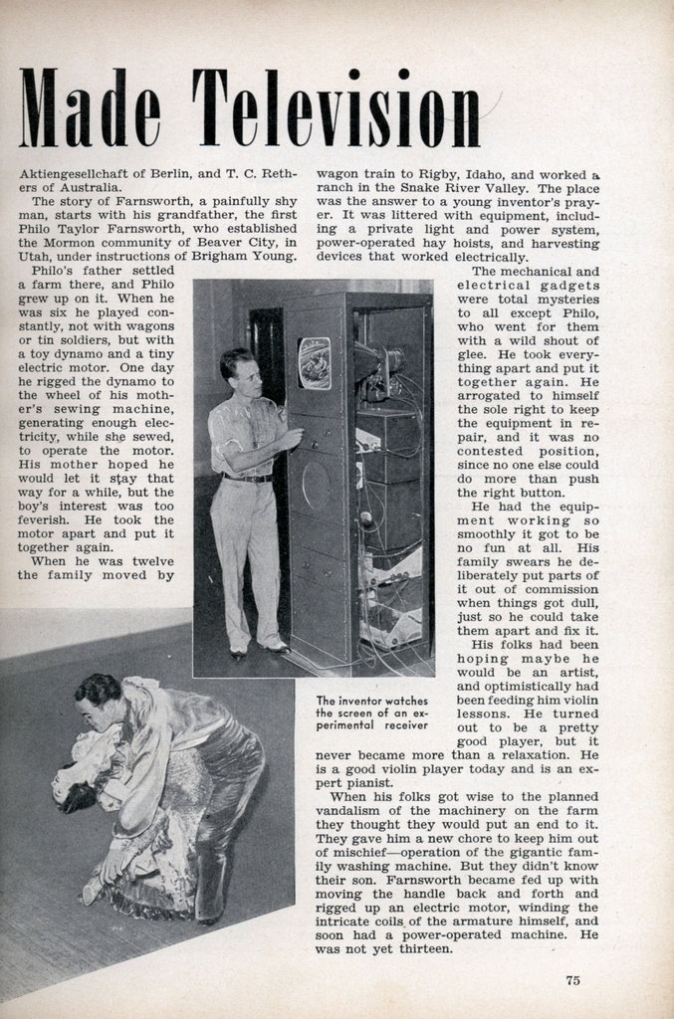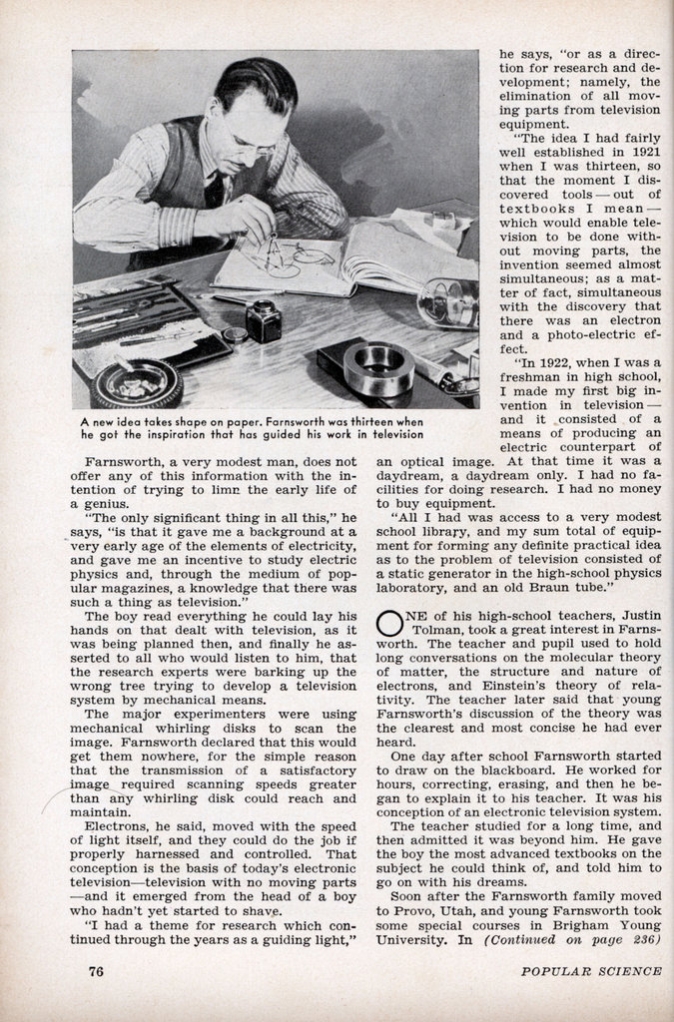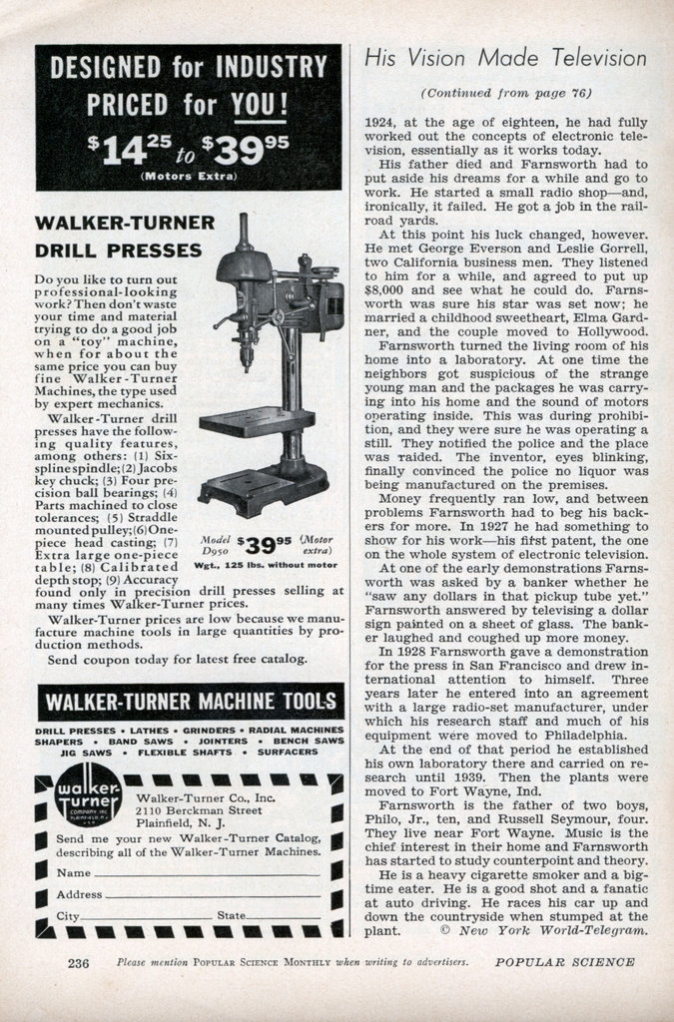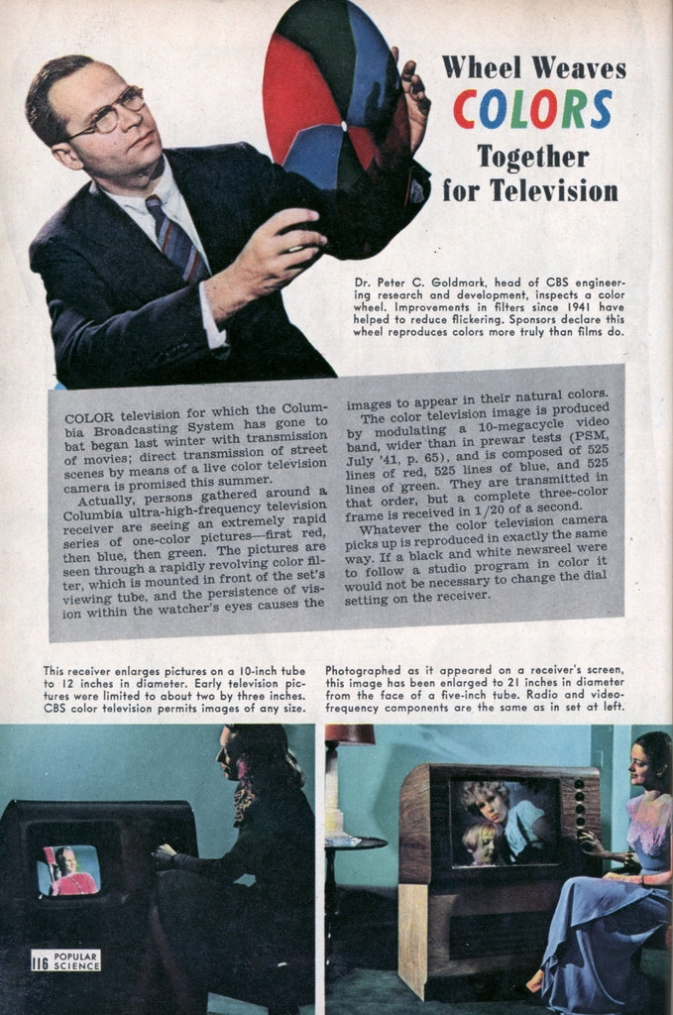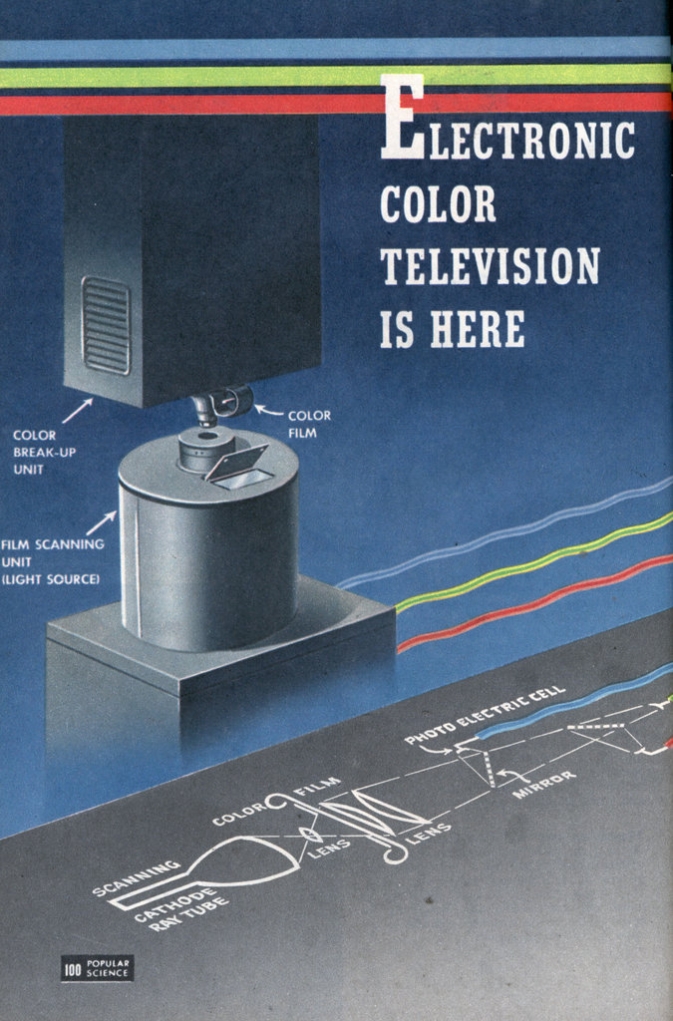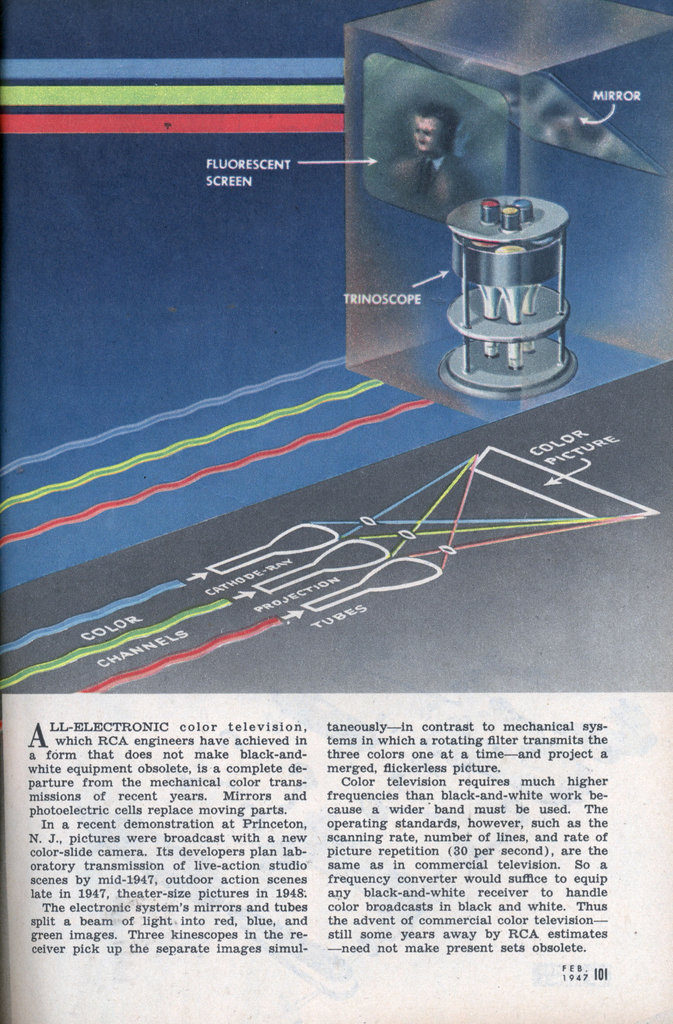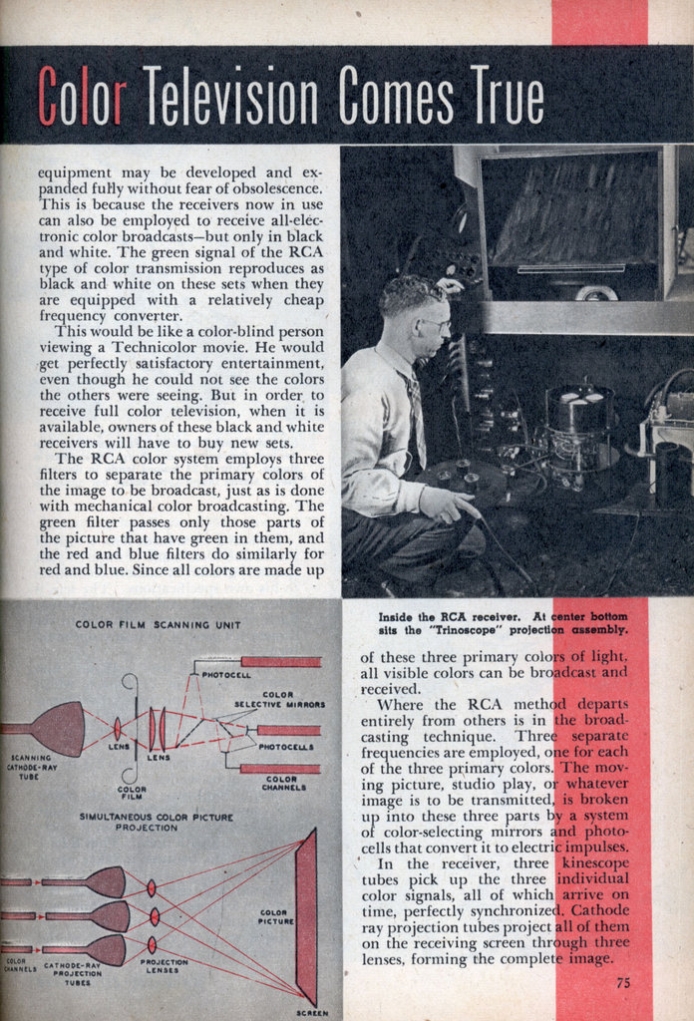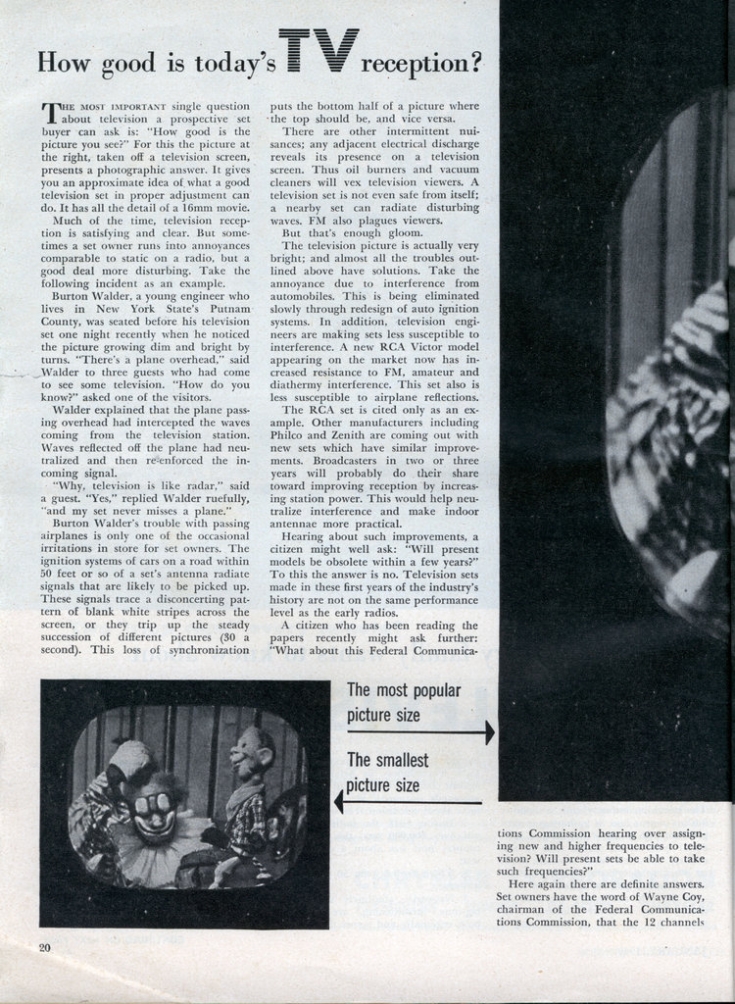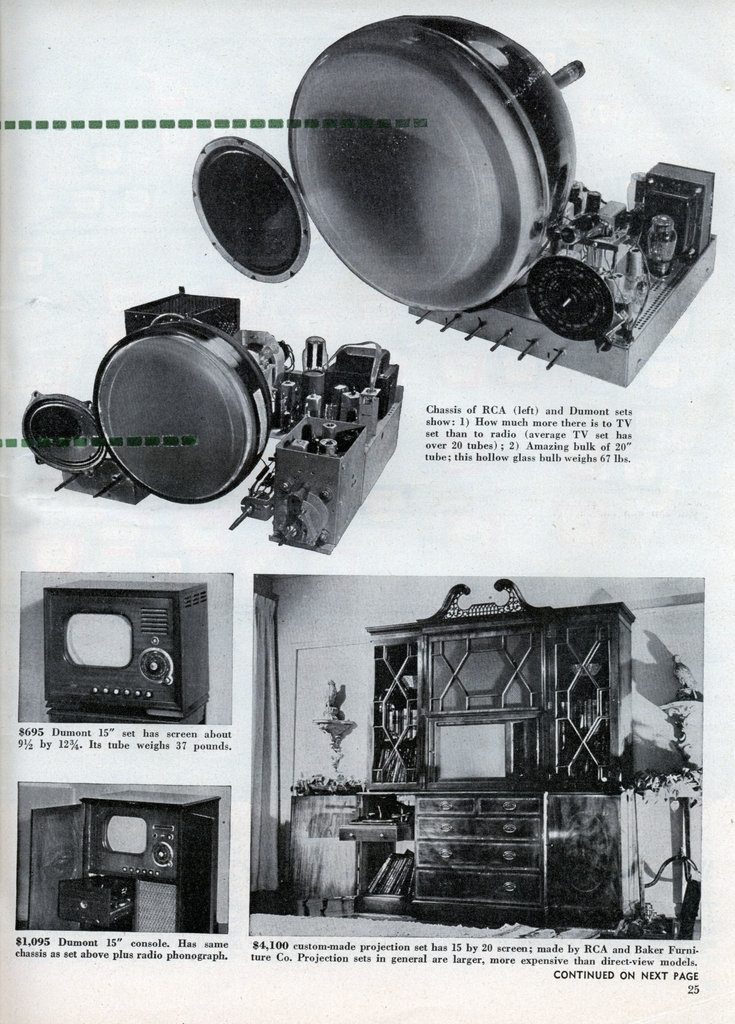- Home
- TV History
- Network Studios History
- Cameras
- Archives
- Viewseum
- About / Comments
Skip to content
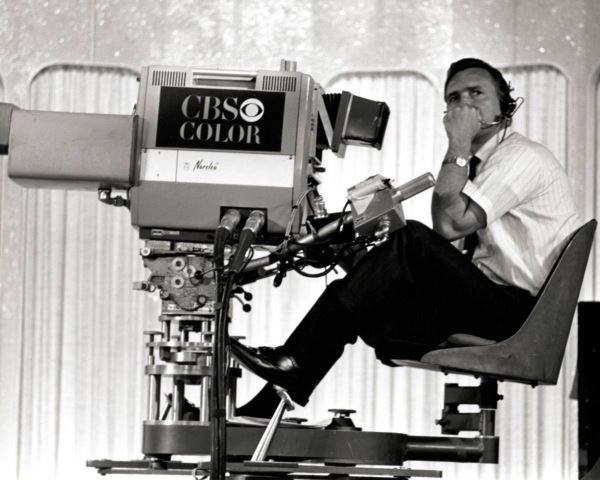
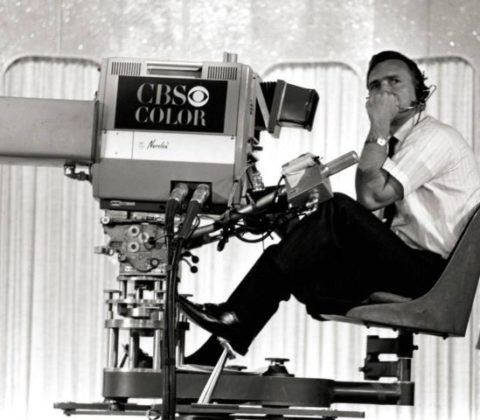
Posts in Category: Library
1931: Tour Of CBS Experimental TV Studio, W2XAB New York
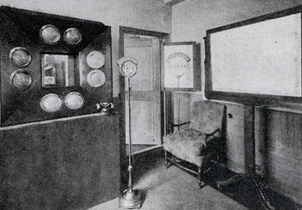
Complete with pictures and drawings, this 1931 article from Science and Mechanics takes us on a tour of CBS’s W2XAB facility in New York…one of the first experimental television stations in the U.S.


Philips Norelco PC70 Catalog
From the early 1970s, here a copy the 31 page Norelco PC 70 catalog. This was television’s “new kid on the block” camera…the one that gave the big kid on the block (RCA) a run for the money and brought the Plumbicon tube to the forefront. Thanks to our friend Scott Baker for the use of his copy.
-NOTE: This is a High-Resolution document and may take a moment to load.
ATT Telephone TV Skyway
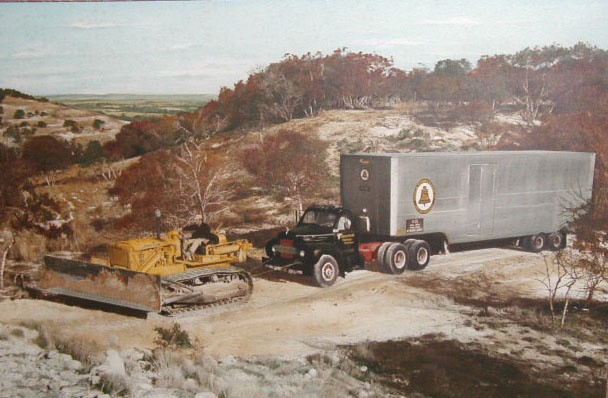
A brief, but informative look at the ATT effort to span the continent with new coaxial and microwave relay systems to enable television from coast to coast.
1929: Radio Movies in Color
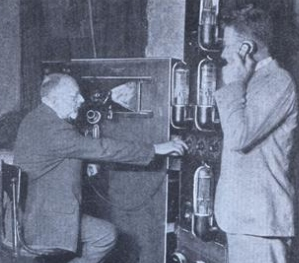
One of the leaders of Bell Labs had an idea of how to show the black and white movies of those days in color. This idea seems to be a lot like what we finally got in electronic color TV, with the use of mirrors and color filters.
1930: Television Gives Radio Eyes and Ears
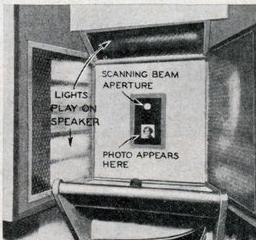
Discussions of 1929 TV milestones like ‘color over a wire’ and other events are described, but TV had yet to prove its broadcast potential and the closed circuit possibilities are discussed here. In their wildest dreams, they never envisioned what TV has become.
1932: David Sarnoff on “Where Television Stands Today”
 “Where Television Stands Today” is an 8-page article written for Modern Mechanics by one of the most important names, and true pioneers, of broadcasting. It’s a very interesting read.
“Where Television Stands Today” is an 8-page article written for Modern Mechanics by one of the most important names, and true pioneers, of broadcasting. It’s a very interesting read.
1932: First American Cathode Ray Televisor
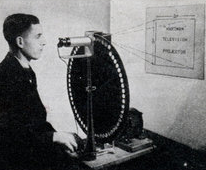
From Everyday Science and Mechanics, a few quick notes on the state of mechanical and electronic television progress, including the lens drum and diagrams of European sets.
1933, Where Television Stands Today
Suffice it to say that TV has come a long way, but this 4 page article from Modern Mechanics published in October of 1933 is quite interesting.
1936: First Philo T. Farnsworth Interview
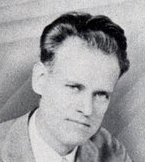
The true father of television as we know it shares his thoughts on the new medium’s future. This may be one of the earliest interviews with him, but even if it’s not, it’s interesting to see his thoughts in the context of the times in which he lived. Remember, the Great Depression was in full force in ’36.
1937: The Truth About Television
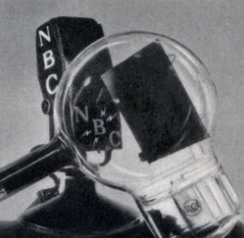
Now this is interesting! Here is a Modern Mechanix article from November 1937 that is complaining about TV. Not the abundance, but the lack! London had 5,000 sets in use while there were only 150 in New York. A lot of finger-pointing about why…leads us back to $$$. Yes, patents were an issue and no one wanted to get to ‘exposed’ before they were sure they had rights to their discoveries.
1938: Early Television Makeup
Here are two very interesting articles with great pictures to show what it took to make people look ‘normal’ in the early years. Wow!
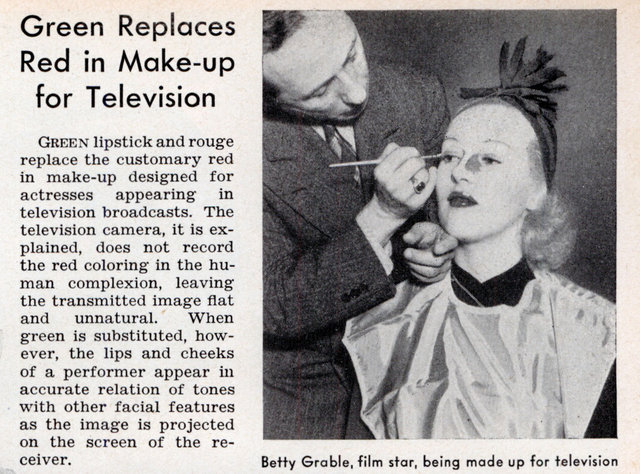
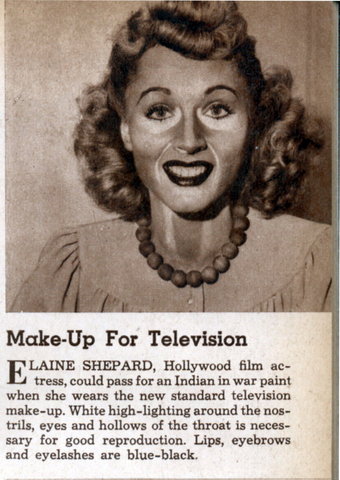
1938: Where Is Television Now?
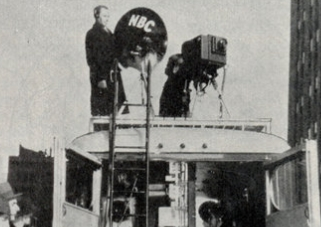
Engineering types will love this great discussion on transmission techniques. Coaxial, long wave and more is discussed here in depth in a very good article. Also, the problems from lack of standards is talked about at length.
1939: New York TV Set Receives London Signal
When I first saw this, I was very curious how this could possibly happen with no coaxial cables or repeaters. The answer is in another article on this page: “1938, Where is TV Now?” The short answer is long-wave transmission, but read the other article for the inside scoop.
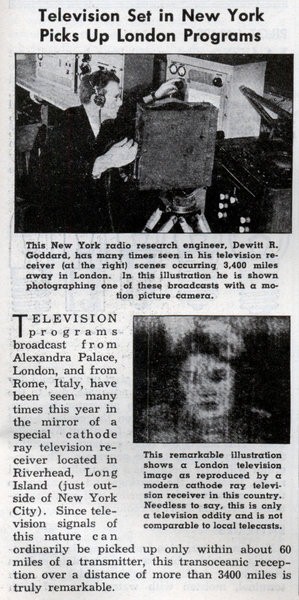
1939: Exploding the Television Boom

Wow! This nine-page article from Mechanix Illustrated is full of pictures, but the story is the biggie. TV had a lot of problems getting off the ground and a lot of those are laid out here. Sarnoff is being pushed by the government, costs of development are explored, problems with linking the coasts, and a lot more are laid out here – as well as the first daily broadcast schedules.
1940: Second Philo T. Farnsworth Interview
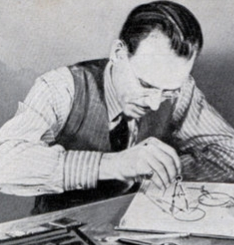
This four-page interview found Philo at age 33 and comes four years after his first major interview above. By now, he and Mr. Sarnoff are probably well acquainted.
1946: Mechanical Color Wheels or Electronic Color?
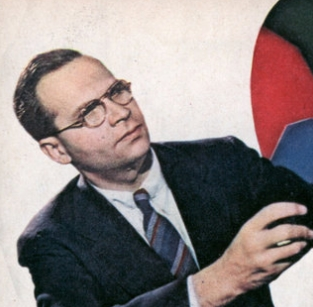
The question of the day: the choice between the CBS color wheel (sequential field system) or the RCA electronic dot matrix.
1947 Color TV Outlook
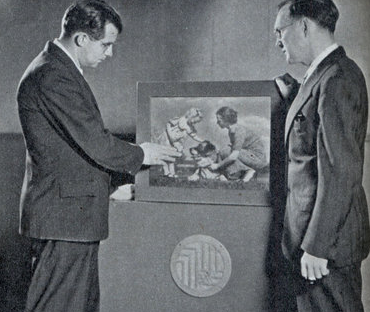
This is one of the first articles I’ve seen that starts to move the thought process away from the mechanical “spinning color disk” (CBS) concept to a more electronic (RCA) concept.
1949: What Every Family Wants To Know About TV
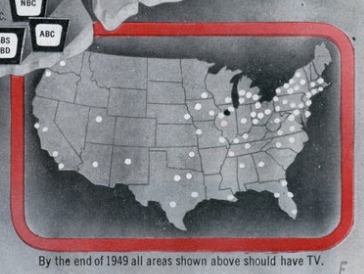
This is about as good as it gets! These 11 pages from the January 1949 issue of Science Illustrated lays it all out! From how many stations and where, to where the new coaxial cables are running, picture sizes, how many sets in use and much much more.
